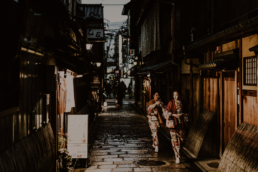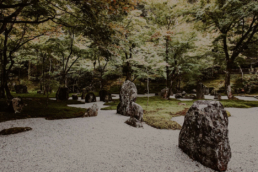Cose da fare in quarantena: Viaggiare in Giappone attraverso i film
Intraprendere un Viaggio in Giappone tramite i film
scritto da: Erika | fonte: Tokyo Weekender
La lunga quarantena è quasi finita ma viaggiare è ancora impossibile, quindi continuiamo la nostra rubrica sulle cose da fare in quarantena e oggi vi spieghiamo come scoprire il Giappone attraverso i film.
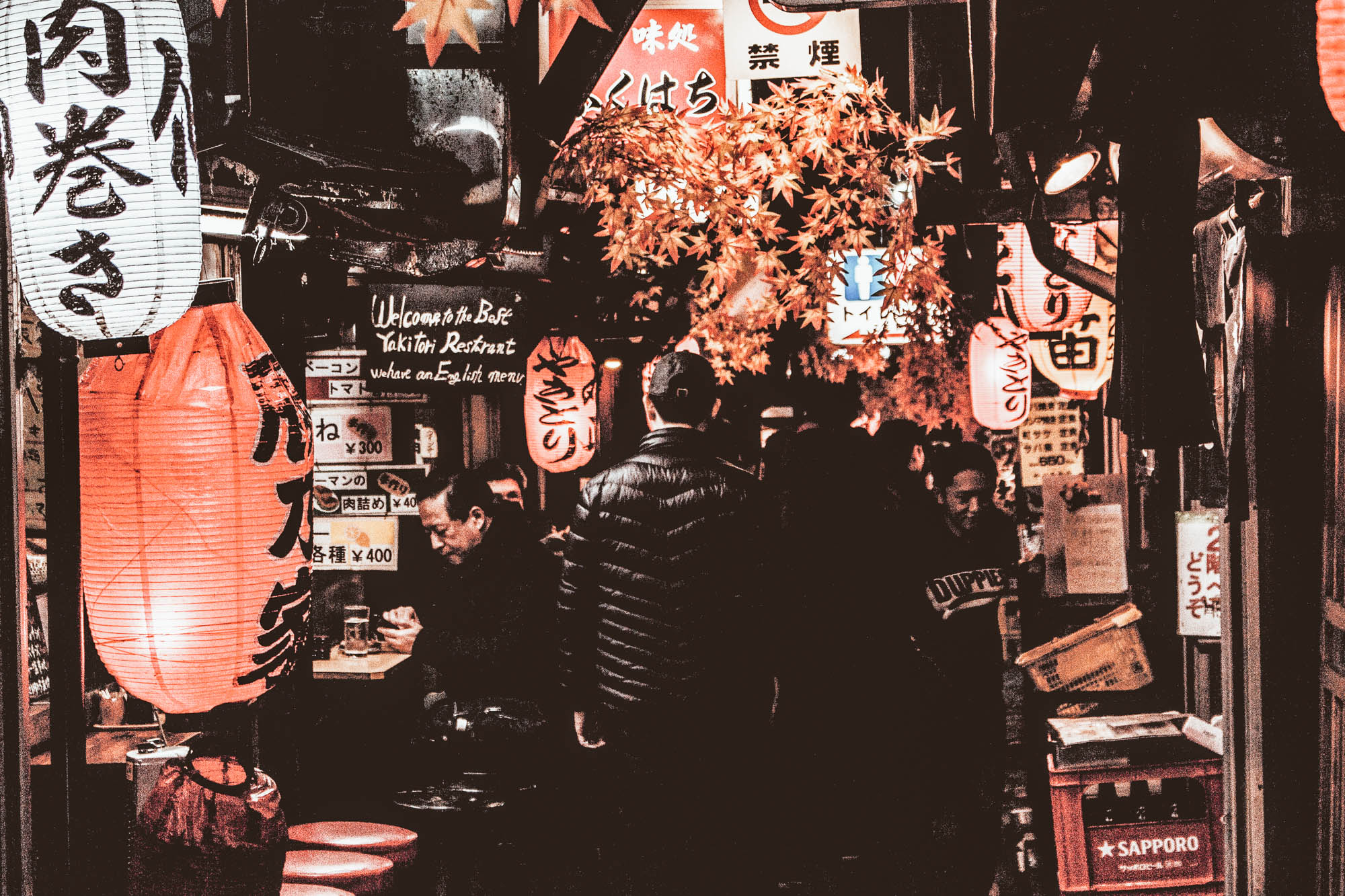
Con la pandemia di coronavirus, i confini del mondo sono stati chiusi, areoporti bloccati e voli cancellati hanno impedito alle persone di viaggiare. Questo non solo ha fatto calare il business del turismo, ma ci ha anche impedito di conoscere ed esplorare paesi lontani come il Giappone. Proprio per questo motivo, oggi condividiamo con voi un metodo semplice per poter esplorare la terra del Sol Levante direttamente da casa vostra. Infatti, ecco qui di seguito 5 film che vi aiuteranno a vivere le terre del Giappone come le conosciamo oggi e com'erano molto tempo fa.
Departures (2008)
Vincitore di un premio Oscar, questo bellissimo film racconta della città di Sakata e dei circondario nella regione Shonai della prefettura di Yamagata, a nord del Giappone. Un'opera d'arte del mondo cinematografico, il lungometraggio parla della storia di un uomo che ritorna nella città natale dopo una carriera fallimentare come violoncellista. Qui l'uomo inizia una nuova vita e una nuova carriera come impresario di pompe funebri nella tipica tradizione giapponese. Scontento della situazione ma sconfiggendo i pregiudizi delle persone legate attorno al suo lavoro, l'uomo comincia ad amare la sua nuova professione.
Inizialmente considerato come un tabu, Departures ha poi proclamato il riconoscimento internazionale del regista Yojiro Takita. Assieme a questo, l'edifico utilizzato per le riprese è diventato una location per film molto famosa. Tuttavia le scene memorabili del film sono state girate nella campagna attorno al fiume Gakko e all'imbra dell'imbiancato Monte Chokai. Questo lungometraggio è perfetto per chi vuole conoscere le location più campagnole del giappone e i costumi più tradizionali della vita rurale del Sol levante.
Memorie di una Geisha (2005)
Famosissimo film e vincitore del premoi Oscar, Memorie di una Geisha è uno di quei film imperdibile legati al Giappone. Dal pluripremiato regista Rob Marshall, questo lungometraggio ha infatti cambiato la faccia del turismo di Kyoto. Nonostante il film non sia stato girato interamente in questa città, la storia ci fa viaggiare nel tempio Kiyomizu-dera, attraverso i torii del Fushimi inari e la foresta di bamboo di Arashiyama.
Il film racconta della vita di una ragazzina di 9 anni che il padre vende ad una casa di Geisha. Infatti, ci incammineremo in un viaggio che trasformerà questa piccola ragazzina in una delle geisha più ricercate del tempo. Questo film, non solo ci fa scoprire paesaggi e tradizioni ormai quasi perdute, ma ha portato per la prima volta in occidente la cultura delle Geisha. Tuttavia, allo stesso tempo, Memorie di una Geisha è anche una celebrazione dell'armonia e degli unici modi di vivere del Giappone.
Infatti, la tradizionale cerimonia del tè, le bellezze dei giardini zen, i classici templi buddisti, le tradizionali case del periodo Edo nello storico distretto Gion fanno da sfondo a qesta storia. Un modo perfetto per descrivere la magica Kyoto e le esperienze che si possono affrontare nell'antica capitale del Giappone.
Lost in Translation (2003)
Film che ha lanciato le carriere di Sofia Coppola e Scarlett Johansson, assieme a Bill Murray, questo lungometraggio racconta la storia di una coppia di amici che si incontra in un hotel a Tokyo. Girato quasi interamente in Giappone, qui possiamo vedere il contrasto fra la vita notturna della città e i colorati e rumorosi distretti di Tokyo, assieme alla calma dei templi.
Vincitore di due premi Oscar, il film è un viaggio nella moderna vita di Tokyo. Passando dalle grafiche neon delle strade di Kabukicho a Shinjuku, sino ad arrivare alle bellissime immagini del famoso incrocio di Shibuya, della Tokyo Tower a il Rainbow Bridge ad Odaiba. Inoltre, il film ci mostra anche la campagna quando la protagonista intraprende un viaggio verso Kyoto. Infatti, dallo shinkansen possiamo vedere il susseguirsi della campagna Giapponese arrivando poi ai Templi Nanzenji e Heian. Non dimentichiamoci poi della bellissima scena dove Murray gioca a golf in Kawaguchiko con le iconice viste del Monte Fuji.
Insomma, un film assolutamente da vedere per chi vuole scoprire di più sul Giappone.
Rhapsody in August (1991)
Uno degli ultimi film del rivoluzionario regista Akira Kurosawa, questo film è ambientanto in una piccola cittadina vicino a Nagasaki. Con una narrazione avvincente ma minimalista, la storia parla di quattro adolescenti che visitano la nonna durante l'estate. Con uno sfondo di cicale, avventure nella foresta, case in legno traballante e cerimonie buddiste i ragazzi affrontano una perfetta vacanza in campagna.
In un bucolico ritratto della vita di campagna giapponese, gli adolescenti trascorrono più tempo con la nonna, ascoltando le sue storie. Sucessivamente, nella seconda metà del film potremo vedere Nagasaki nel dopoguerra con i colori vivaci della giovinezza. Infatti, i giovani intraprendono un viaggio per vedere i siti dei bombardamenti e la scuola dove il nonno era insegnante mentre avveniva l'esplosione.
Un film che ci permette di conoscere il mondo del Giappone nel dopo guerra, ma che allo stesso tempo diventa una denuncia delle colpe delle guerre stesse. Controverso ma allo stesso tempo illuminante, Rhapsody in August è un film davvero imperdibile per tutti coloro che amano il cinema e il Giappone.
Times of Joy and Sorrow (1957)
Questa volta l'acclamato regista Keisuke Kinoshita ci racconta della storia del custode di un faro, di sua moglie e dei loro viaggi in 10 fari differenti lungo la costa del Giappone. Una relazione e viaggi che coprono 25 anni di matrimonio, attraverso questo film scopriamo il Giappone in diversi anni a partire dal 1932.
Il famoso sito di Kannonzaki, il primo faro della nazione, ha funzionato come set per le scene di apertura. Infatti, qui ora troviamo una statua dei protagonisti del film. Grazie al sorprendente lavoro del direttore della fotografia, attraverso questo film abbiamo la possibilità di intraprendere un viaggio fra i vari fari della nazione. Infatti, a questo proposito vediamo le bellissime scene del faro di Hajikizaki sull'isola di Sado, una meraviglia per i nostri occhi.
Successivamente, il viaggio della coppia ci porta in alcune delle aree più remote del Giappone e le avventure e disavventure dei protagonisti ci fanno conoscere lo staff dei fari.
Un film emozionante che fra onde e costiere ci accompagna in un viaggio cartolina dei lidi del Giappone, assolutamente imperdibile.
Cose da fare in quarantena: Costruire Akihabara in miniatura
Costruire Akihabara in miniatura a casa vostra
scritto da: Erika | fonte: TimeOut Tokyo
Anche se qui in Italia le cose stanno cominciando ad andare meglio, continuamo la nostra rubrica sulle cose da fare in quarantena e oggi spieghiamo come costruire una mini Akihabara.


Una delle mete preferite di tutti gli otaku e i fan del Giappone è Akihabara, storico quartiere dedicato appunto a tutto ciò che è manga, anime e videogiochi. In questo momento delicato, non ci è ancora consentito viaggiare. Tuttavia non serve prendere l'aereo per conoscere nuovi luoghi e visitare quelli che abbiamo già visto. Infatti oggi condividiamo con voi la possibilità di ricreare Akihabara in miniatura direttamente da casa vostra!
Ad Akihabara ci sono non solo tanti luoghi dedicati a quel mondo che noi definiremmo nerd, ma ci sono anche tantissimi club e negozi dedicati a vari hobby. Uno di questi è Mansei Club, un angolo che offre una varietà di giochi divertenti, istruzioni per origami e modelli di carta il tutto gratuitamente.
Se siete ancora bloccati a casa e non sapete cosa fare, potete ora infatti ricreare l'iconico quartiere di Tokyo con questi modelli di carta dettagliati. Infatti, le strade di Akihabara sono riportate tutte in queste riproduzioni in scala dettagliate. Creare questo modellino è semplicissimo, basterà seguire le istruzioni elencate in questi PDF disponibili gratuitamente per il download. Infatti, queste riproduzioni mostrano perfettamente gli edifici di Akihabara e anche dove questi edifici vanno posizionati. Nonostante le istruzioni siano in giapponese, è in realtà molto semplice seguirle anche grazie alle varie illustrazioni.

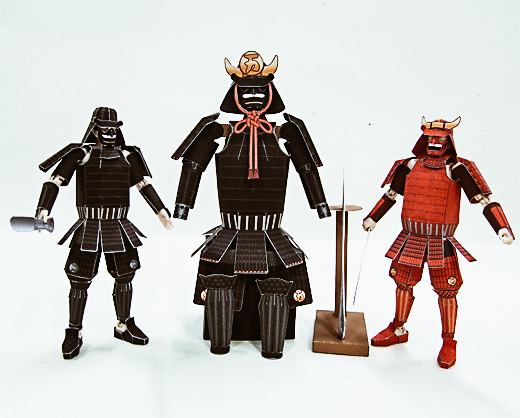
Tuttavia, se costruire un'intero quartiere sembra troppo complicato per voi, non vi preoccuate ci sono molte altre possibilità. Infatti, Niku no Mansei offre più di 50 modelli di carta che potete scaricare gratuitamente. Dal design che varia dalle riproduzioni di famosi Samurai sino ad arrivare a modelli di riproduzioni dei più famosi cibi giapponesi. Insomma, qui troviamo la possibilità di accontentare ogni gusto e ogni tipo di hobby! Non vi rimane altro che scegliere il vostro modellino, scaricarlo e mettervi all'opera! Siamo curiosi di vedere i risultati!
Cose da fare in quarantena: Imparare la cucina giapponese
Imparare la cucina giapponese con 5 YouTuber
scritto da: Erika | fonte: TokyoWeekender
Continuiamo la nostra rubrica sulle cose da fare in quarantena e oggi vi parliamo di come poter imparare la cucina giapponese con l'aiuto di 5 YouTuber.
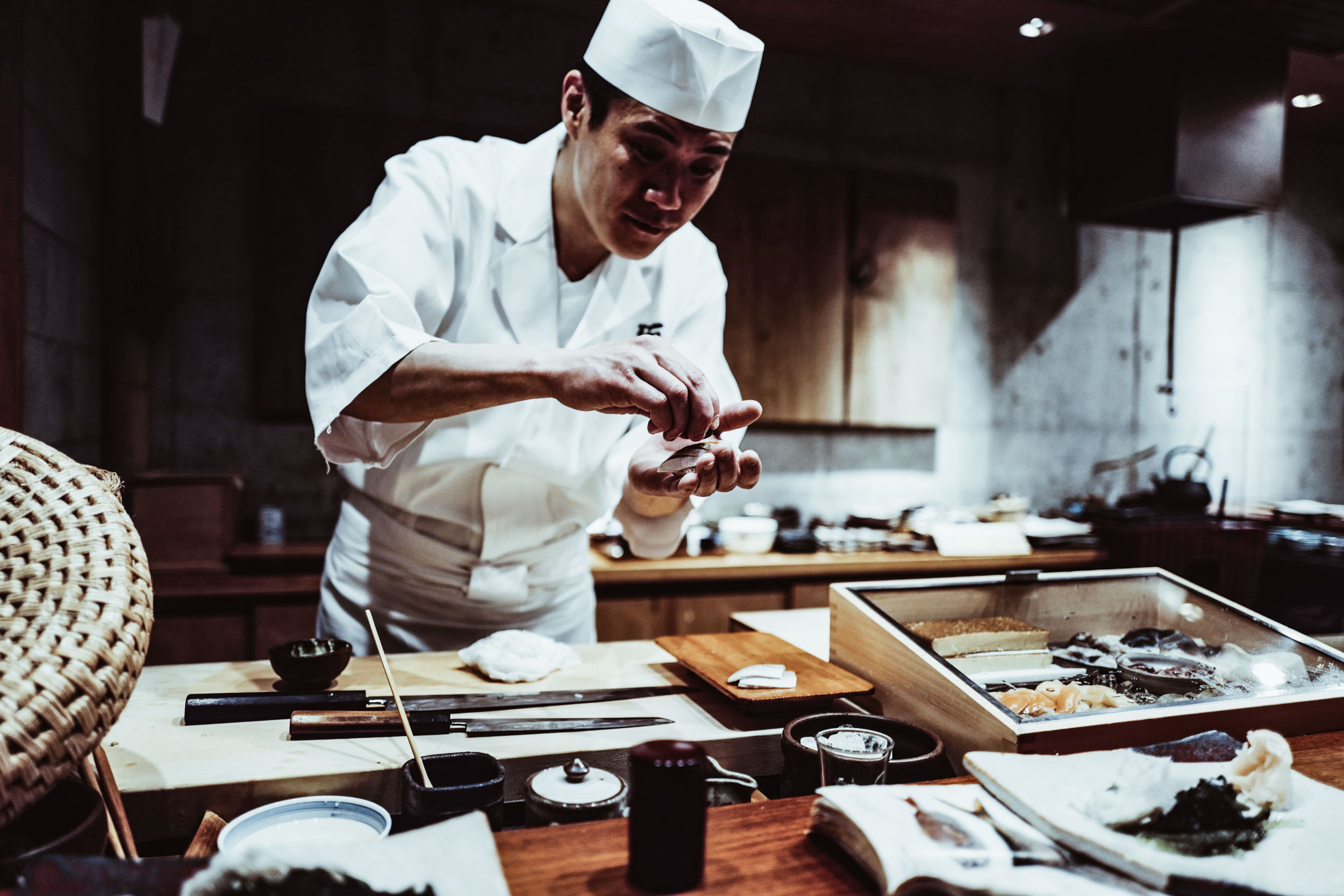
In questi giorni di lockdown, ci stiamo tutti cimentando in nuove ricette e sperimentando nuove combinazioni di sapori. Ecco quindi 5 YouTuber da seguire per poter imparare la cucina giapponese e cimentarvi in qualche piatto!
Tasty Japan
Loro sono i nostri preferiti. Un sacco di ricette semplici da seguire, con tutti gli ingredienti facilmente recuperabili in qualsiasi parte del mondo voi viviate. Dai dolci ai primi piatti, dalle quiche alle seconde portate. Autentico e divertente, Tasty Japan coinvolge lo spettatore con video didattici e tanti ospiti. Quasi tutti i video hanno i sottotitoli in inglese e tutti i presentatori sono molto divertenti e pieni di energia, rendendo anche i piatti più complicati semplici da fare. Video che rientrano della categoria #foodporn per eccellenza, assicuratevi di essere a stomaco pieno quando proverete a cucinare queste delizie.
Ochikeron
Madre di due figlio, la protagonista del canale Ochikeron crea piatti per far cucinare insieme la famiglia. Infatti, i piatti più semplici presenti sul canale possono essere cucinati insieme anche ai più piccolini. Tuttavia, i piatti più complicati che richiedono più tempo ed energia sono disponibili per tutti coloro impavidi abbastanza da provare tutte queste nuove ricette. Tutto questo rende questo canale un mondo unico per tutti quei progetti di cucina da creare insieme. Inoltre, se siete stufi delle solite cene, questo è il posto giusto per trovare nuove idee.
Japanese Cooking 101
Con un'enorme selezione di video, Japanese Cooking 101 non solo offre piatti giapponesi facili da realizzare, ma si possono trovare anche lavorazioni più complicate. Dal Karaage fino al riso fritto al chanko nabe, un piatto in stile hot-pot perfetto per l'inverno, questo canale youtube è un vero e proprio catalogo di cucina giapponese. Infatti, possiamo trovare un sacco di ricette da poter sperimentare e ciascun video mostra un elenco completo degli ingredienti assieme alle istruzioni su come creare il piatto. Nonostante altri canali abbiano un po' di intrattenimento, Japanese Cooking 101 ha un approccio più didattico e asciutto, ma facilissimo da seguire.
Diaries of a Master Sushi Chef
Se invece come tanti occidentali amate il sushi, il canale di Hiroyuki Terada fa per voi! I diari di questo maestro e sushi chef vi insegneranno come destreggiarvi fra coltelli, filettature e molto altro. Infatti, su questo canale potrete trovare i metodi per creare del buonissimo sushi ma anche piatti come pollo teriyaki e tante altre delizie in stile izakaya. Con collaborazioni del calibro anche di Chef Ramsey, questo è il canale per tutti coloro che vogliono cimentarsi seriamente nell'apprendimento dell'arte del sushi.
Aki’s Japanese Recipes for Vegans
Ristorante vegani e vegetariani sono difficili da trovare a Tokyo, questo ha portato alla nascita di vari canali YouTube fra cui quello di Aki. Infatti, su questo canale potete trovare le migliori ricette per tutti quelli che amano una cucina non convenzionale. Una vera e propria esperienza sensoriale in HD per un canale accessibile e con le istruzione scritte in giapponese e inglese. Inoltre, Aki, il protagonista del canale, si prende sempre il tempo per spiegare al meglio le sue ricette e far si che i piatti abbiano sempre un bell'aspetto.
Mame Kurogouchi x TOD'S
Mame Kurogouchi x TOD'S, quando il Made in Italy si fonde con il Giappone
scritto da: Erika | Photo courtesy of TOD's
Il Giappone e l'Italia sono sempre stati legati da molte cose, l'amore per l'arte e la moda è una di queste, da qui nasce la nuovissima collaborazione di Mame Kurogouchi con TOD's.

TOD's, storico marchio italiano fondato agli inizi del 1900 da Filippo Della Valle, è oggi uno dei marchi più conosciuti a livello mondiale. Brand diventato famoso per le sue calzature iconiche, oggi, sotto la guida di Diego Della Valle, il marchio detiene una grossa fetta del mercato della moda italiano. Con un design sempre impeccabile, di classe, minimal e chic, TOD's ha sempre fatto un po' l'occhiolino a quelle che sono anche le caratteristiche del design giapponese. Per questo motivo, non ci sorprende la collaborazione con Maiko Kurogouchi, designer del brand Mame Kurogouchi.


La designer è la nuova ospite di T-Factory, progetto lanciato da Diego Della Valle nel 2018 che ha visto coinvolti in precedenza anche Alessandro Dell'Acqua e Alber Elbaz. Una collezione di 26 pezzi fra capi e accessori che ha lanciato il online il 27 marzo che si concentra sui toni del bianco e blue navy. Assieme a questo, troviamo anche delle silhouette pure e architettoniche sia per gli abiti che per le calzature.
Maiko, detta Mame, Kurogouchi
Classe 1985, originaria di Nagano, la designer fonda il brand con il suo nome nel 2010, unendo un'estetica minimal e pulita agli usi più tradizionali del Giappone. Infatti, trae molta ispirazione da tutto ciò che è nel suo DNA giapponese, dalla tessitura a mano al modo di incartare cibo e fuori.
La sintonia con TOD's è cominciata a Parigi dopo una conversazione con il sig. Della Valle. Infatti, i due creativi hanno scoperto di avere molto in comune a partire dalle loro visioni. Un'idea di brand con un eleganza senza tempo, che rispetti la tradizione artigianale e con un estetica legata al concetto del viaggio. Questi sono anche gli elementi base della collezione disegnata per il brand.
"A me interessa che ogni donna possa indossare questi pezzi, e che nel farlo si senta sicura, a proprio agio"



Acclamata come una dei designer emergenti migliori del Giappone, Mame Kurogouchi ha rielaborato i capi chiave del marchio cambiando però tutti i dettagli per fondere a pieno questo incontro fra Italia e Giappone. Con precisione e passione, la Kurogouchi ha trasformato il quotidiano i qualcosa di elegante sia per i capi di abbigliamento che per gli accessori. Fondendo il design classico giapponese con delle silhouette contemporanee e tessuti sportivi, Mame Kurogouchi pensa a ciò chi è veramente necessario per una donna, senza dover rinunciare all'eleganza.
La Collezione
Una collezione composta da 26 pezzi che attinge e ammicca al Giappone in molto dettagli. Fra i pezzi chiave troviamo un trench monopetto con collo a camicia e tasche in pelle, tuniche pullover a trapezio con maniche a kimono e camicie con maniche a sbuffo e una cintura che rimanda alla vestizione Samurai. Inoltre, troviamo come focus principale di ogni capo la praticità e una modernizzazione dei pezzi iconici del brand. Mame Kurogouchi infatti reinterpreta la classica borsa ad anello scoperta dall'archivio del brand rendendola un pezzo perfetto per tutte le donne in viaggio ma che cercano anche eleganza, leggerezza e versatilità.



Un altro elemento che richiama il Giappone sono tutto i ricami intricati che secondo la designer ricordano le tecniche di cucitura Kogin-Zashi. Sempre dagli archivi di TOD's, la designer ha trovato diverse somiglianze con i lavori della terra del Sol Levante, nonostante la distanza geografica e culturale fra l'Italia e Il Giappone. A questo proposito, in un'ottica di collaborazione non solo lavorativa ma anche culturale, i cinturini presenti sugli accessori diventano simbolo di vicinanza anche fra le due nazioni e culture. Una miscela perfetta tra vecchio e nuovo ma anche fra Giappone ed Italia.
La collezione Mame Kurogouchi x TOD'S, disponibile sull'e-commerce del brand, è solo il primo passo verso la crescita internazionale di questa giovane e talentuosa designer.
[ngg src="galleries" ids="4" display="basic_thumbnail" thumbnail_crop="0"]
Cose da fare in quarantena: I migliori podcast sul Giappone
I migliori podcast Sul Giappone
scritto da: Erika | fonte: TimeOut Tokyo
Continuiamo la nostra rubrica sulle cose da fare in quarantena e oggi vi parliamo di alcuni podcast dedicati al Giappone.
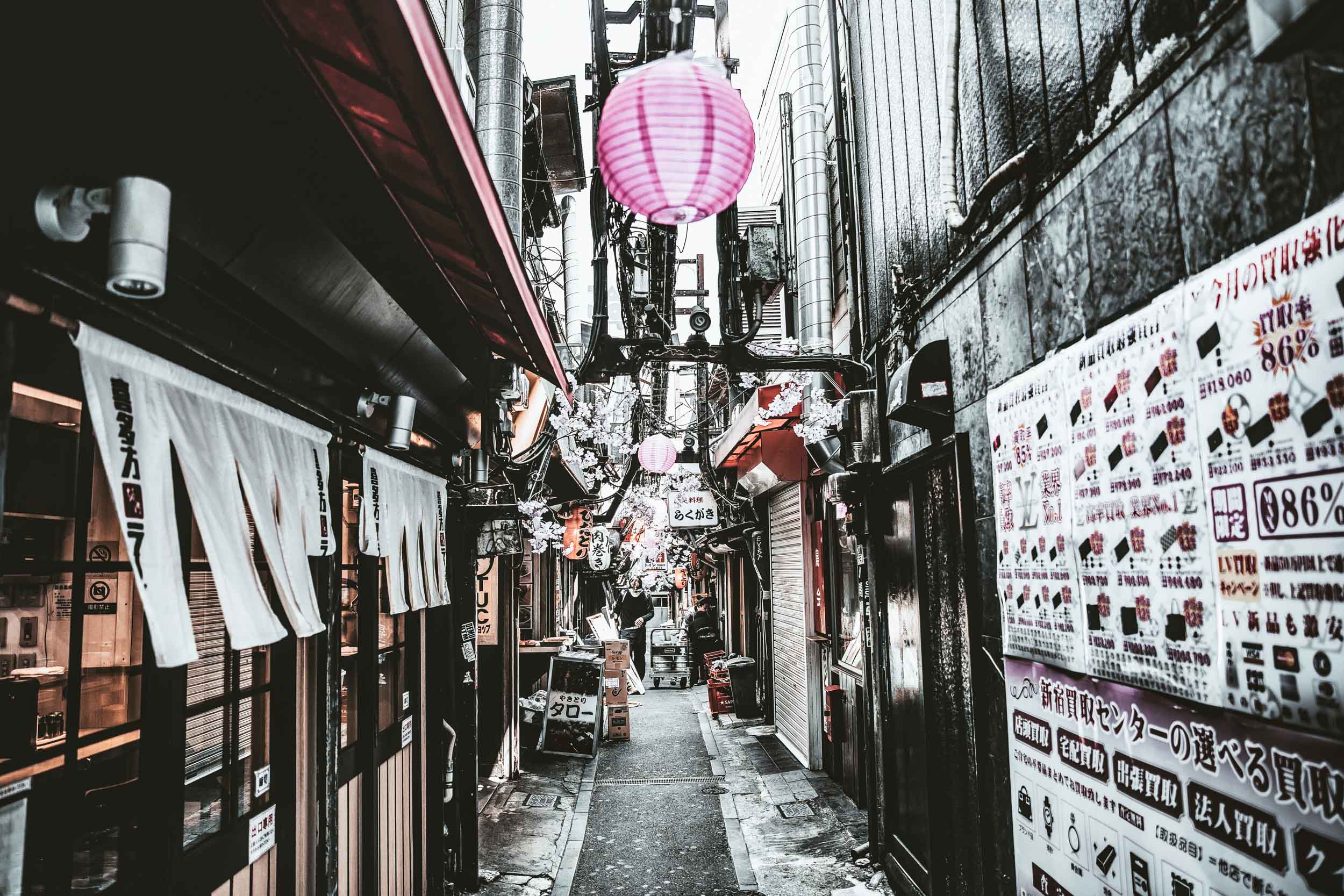
L'emergenza COVID-19 ha prateicamente reso impossibile programmare viaggi per almeno un altro anno. Tuttavia, per tutti gli appassionati della cultura giapponese, oggi condividiamo con voi un modo facile e divertente per apprendere di più su questo argomento. Infatti, ci sono diversi podcast che possono riempire questo vuoto aiutandovi a scoprire le mille sfaccettature del Giappone. Infatti, tramite questi audio, sarà possibile scoprire i mille aspetti e sfaccettature più nascosti del Sol Levante senza dover affrontare voli e treni affollati.
Per esempio, siete a conoscenza del perchè i fiori giglio ragno si trovino vicino ai cimiteri e alle risaie giapponesi? Sapete chi erano le donne pioniere del Sol Levante? Questi podcast non solo approfondiscono il cibo, la storia e le leggende di questo paese, ma risponderanno anche alle domande che non sapevate nemmeno di avere. Quindi, in questo momento dove non ci è possibile nè uscire nè viaggiare, lasciate che questi podcast vi portino in un viaggio di qualche minuto attraverso il Giappone.
Japan Eats - Imparare a conoscere la cucina Giapponese

Japan Eats è un podcast di una radio storica con base a Brooklyn incentrato sul cibo. Presentato da Akiko Katayama, giornalista di cucina giapponese e direttrice della New York Japanese Culinary Academy. Qui si parla di tutto, dalle varie mode delal cucina giapponese, ai drinks e molto altro ancora. In uno degli episodi recenti, Akiko si è concentrata persino su come vivere una vita vegetariana in Giappone, l'arte degli Yakitori e molto altro. Il podcast ha già più di 180 episodi con una nuova puntata ogni setimana.
Uncanny Japan - Tutte le leggende giapponesi in un podcast
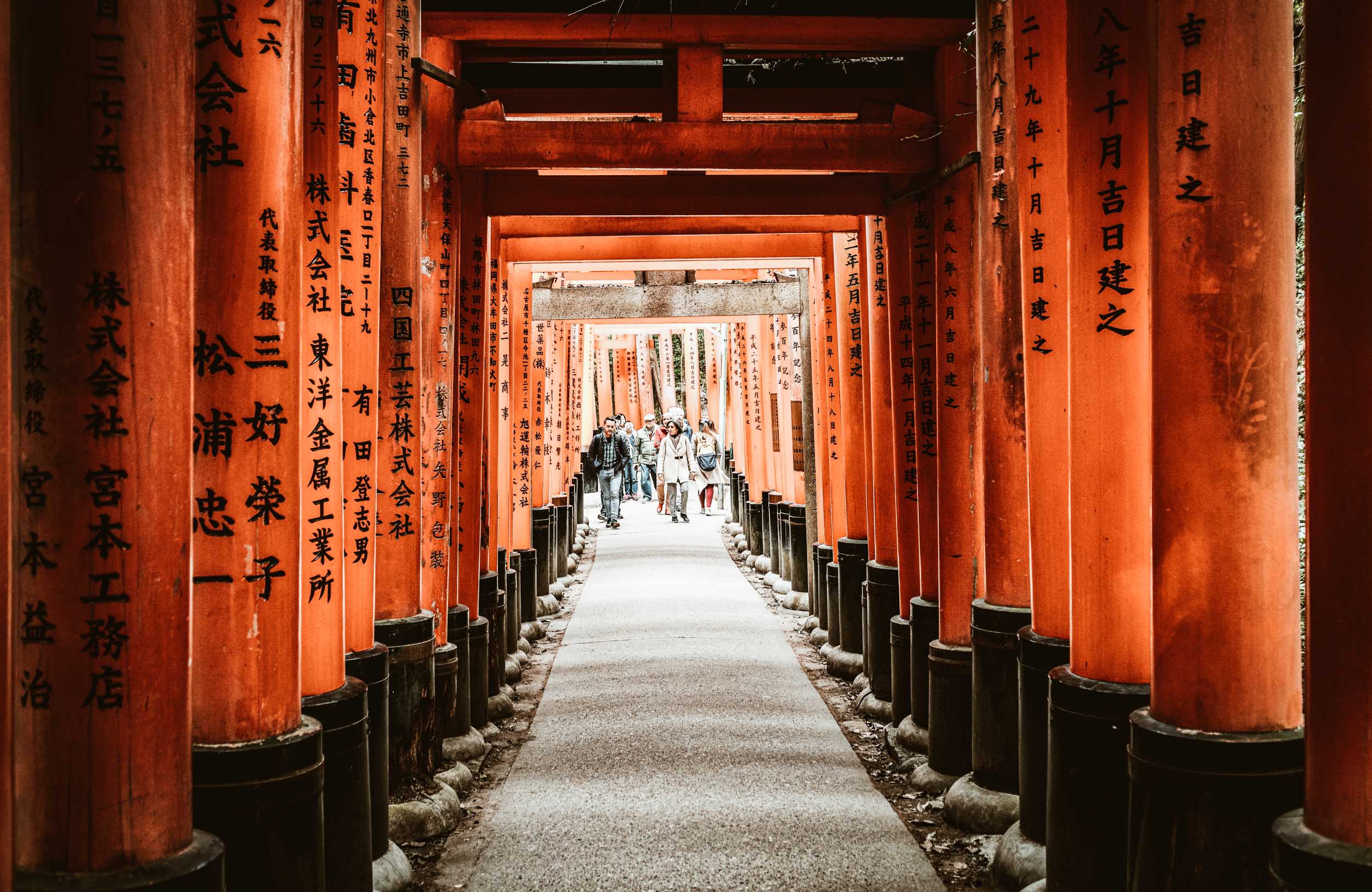
Theresa Matsuura, autrice americana che ha vissuto metà della sua vita in un villaggio di pescatori in Giappone, presenta Uncanny Japan. In questo podcast, Matsuura parla di quelle parti della cultura giapponese che spesso sono invisibili o non accessibili a chi non parla la lingua. Allo stesso tempo, offre un approfondimento sui costumi locali, le leggende, il folklore e le superstizioni del Sol Levante. Pronti ad immergervi nelle fantasiose e a volte anche spaventose fiabe giapponesi?
History of Japan - Imparare la storia Giapponese
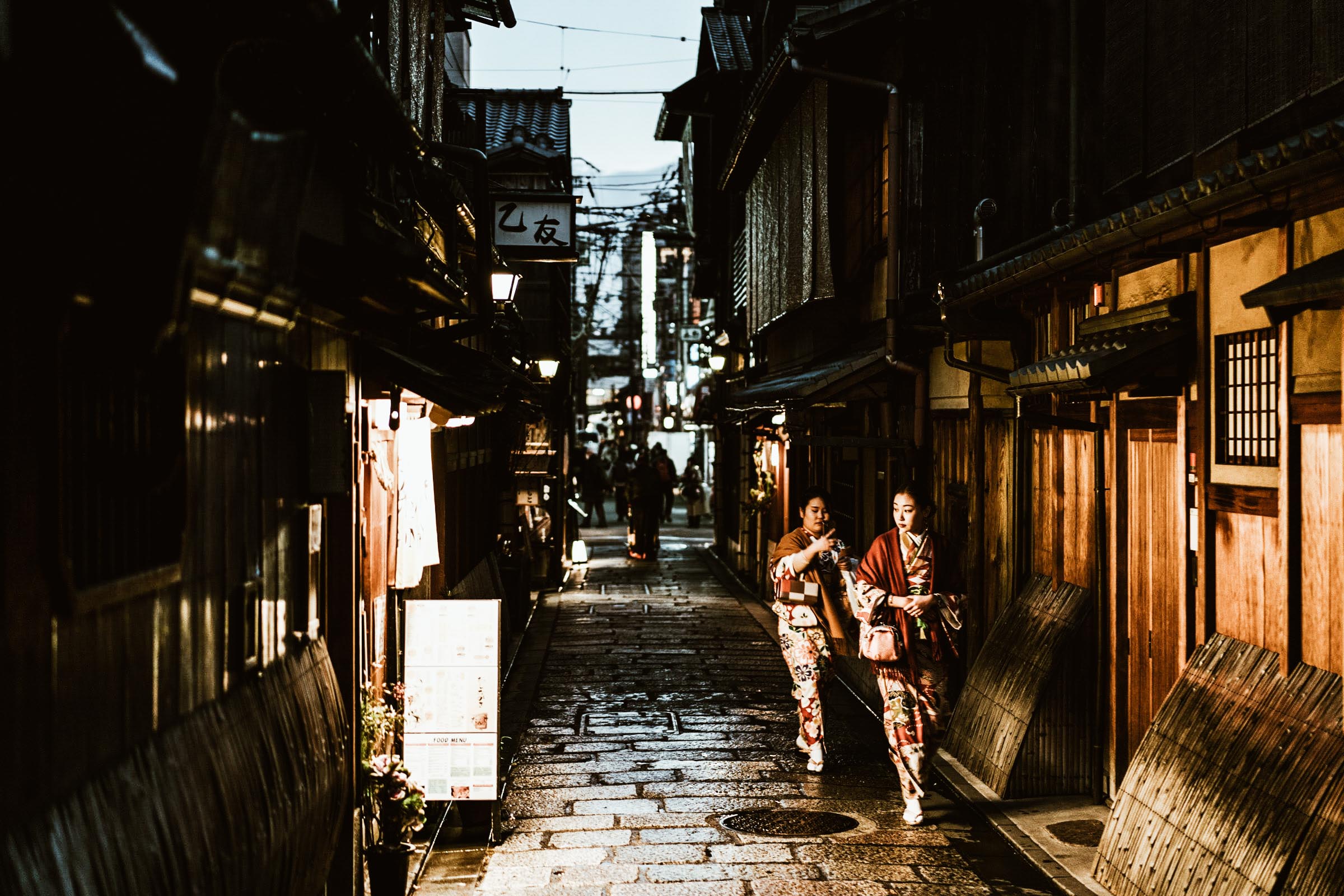
Isaac Meyer, insegnante con dottorato di ricerca specializzato nel Giappone moderno, non lascia niente di nascosto in questo podcast storico. Dal Giappone antico a quello moderno, passando per poeti, scandali politici, boom economici, samurai, geisha e molto altro. Infatti, questo podcast è uno sguardo approfondito attraverso la storia del Sol levante in ogni episodio. Informativo ma anche affascinante da ascoltare, History of Japan ha più di 300 episodi che possono tenervi compagnia in questo periodo di lockdown.
Voices in Japan - La vita in Giappone

Ben e Burke, espatriati in Giappone che vivono ad Hokkaido, condividono la loro esperienza di vita nella terra del Sol Levante. Il podcast Voices in Japan parla della loro vita dal lavoro allo studio della lingua Giapponese, all'imparare le usanze della nazione e molto altro. Gli episodi settimanali includono argomenti generali legati al vivere in Giappone come ad esempio uno sguardo al sistema sanitario giapponese. Inoltre, si parla anche dell'amore per la tecnologia, il Sumo e i potenziali benefici della dieta giapponese. Che voi viviate in Giappone o che vogliate solo ascoltare di più riguardo alle esperienze di vita, questo podcast è già che fa per voi.
Sake on Air - Tutto sul mondo del Sake
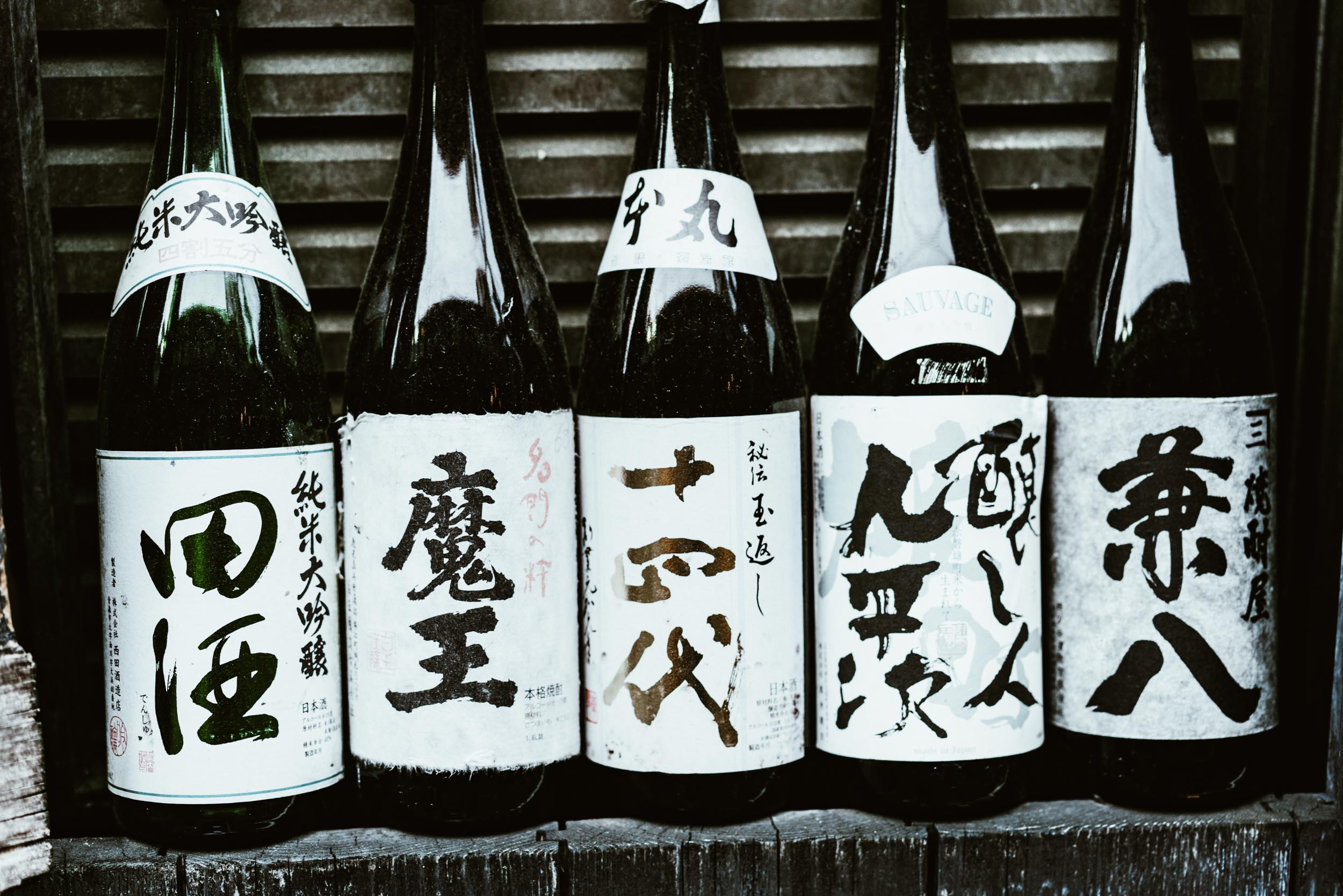
Per tutto gli appassionati di Sake e shochu, Sake on Air è il podcast fatto per voi. Gli esperti di questa famosa bevanda giapponese condividono le loro conoscenze in ogni episodio, invitandoci a questa cena virtuale. Infatti, in ogni puntata troviamo un diverso argomento come le nuove mode per la manifattura, storie dai produttori ma non solo. Possiamo anche imparare a conoscere i vari aromi, la differenza fra il riso utilizzato e come abbinare i vari gusti di Sake al cibo. Quindi, se anche voi siete curiosi, armatevi di un bicchiere di vino o del vostro sake preferito e mettetevi all'ascolto!
Cose da fare in quarantena: creare un giardino Zen edibile
Creare un giardino zen edibile
scritto da: Erika
Il mondo è ancora in lockdown e in mancanza di cose da fare possiamo darci alla pazza gioia in cucina, ecco perchè oggi condividiamo con voi una nuova idea, creare un giardino zen edibile!
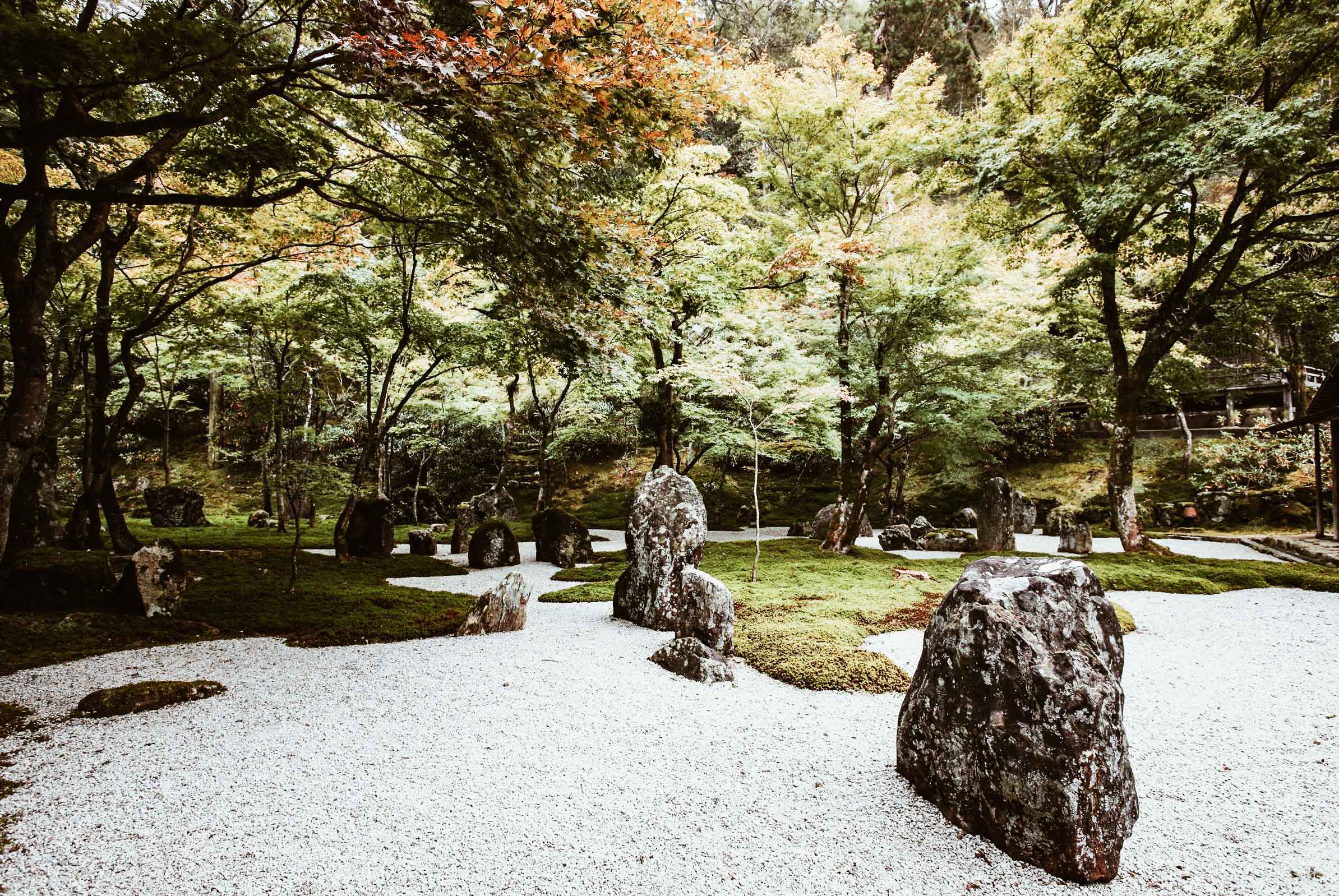
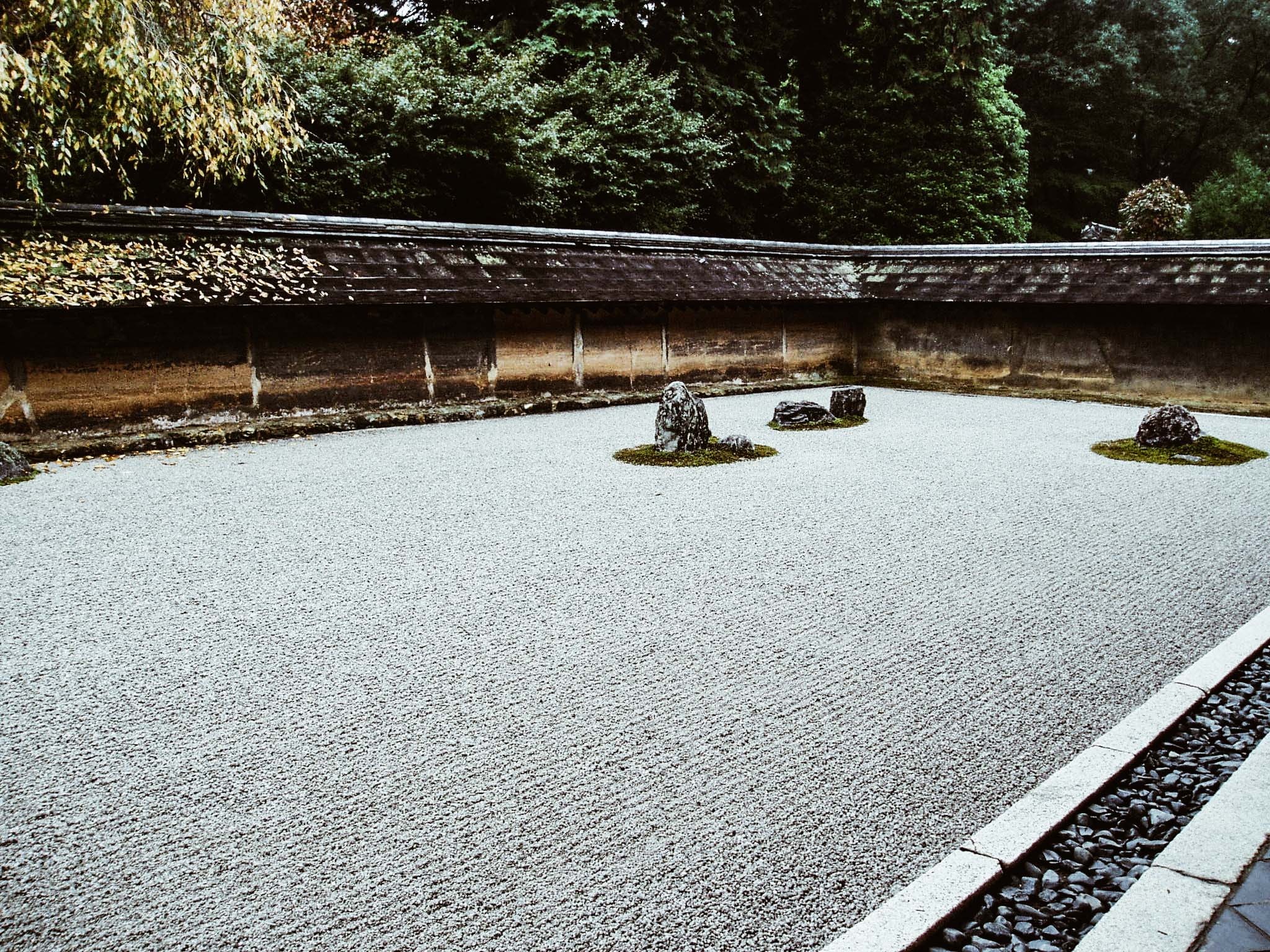
In Giappone ci sono dei preparati fatti apposta per condividere questa esperienza in famiglia, anche assieme ai più piccini. Invece, oggi vi proponiamo una variante da creare direttamente a casa vostra con ingredienti facilmente reperibili in qualsiasi supermercato.
In ogni giardino zen che si rispetti troviamo rocce, sabbia o ghiaia, del verde e qualche sasso per poterlo attraversare senza disturbarne la tranquillità. Seguendo le nostre istruzioni, potrete ricreare esattamente questa atmosfera.
Step 1: I Sassi
Come ben saprete, un ornamento fondamentale del giardino zen sono queste enormi pietre presenti al suo interno. Nella nostra ricetta andremo a creare le pietre con dei semplicissimi brownies.
Brownies - Ingredienti
|
|
I brownies sono semplici da fare e non vi richiederanno troppo tempo, cominciate quindi tritando il cioccolato grossolanamente e scioglietelo a bagnomaria. Quando sarà quasi fuso, aggiungete il burro morbido tagliato a pezzetti.
Mescolate accuratamente fino a far fondere tutto sempre a bagnomaria e poi toglietelo dal fuoco. Successivamente lasciate raffreddare mescolandolo di tanto in tanto.
Mentre aspettate che il cioccolato si raffreddi, prendete le nocciole e lasciatele tostare in forno preriscaldato a 180° per circa 7/8 minuti. Una volta sfornate, lasciatele intiepidire per non scottarvi, successivamente tritatele in modo grossolano e tenetele da parte.


Passiamo quindi allo step successivo, mettete le uova in una terrina e cominciate a sbatterle per poi unire lo zucchero. Non è necessario montare il composto, ma proseguite a sbattere solo fino a quando lo zucchero non sarà ben sciolto. A questo punto, unite un pizzico di sale e lasciate sciogliere anche questo. Sempre con le fruste in azione, aggiungete lentamente il composto di cioccolato e burro che ormai si sarà intiepidito.
Non appena sarà tutto amalgamato smettete di sbattere. Prendete un colino a maglie strette e setacciatevi attraverso la farina. Successivamente, amalgamate il tutto con una spatola fino a far assorbire la farina in maniera uniforme. Prendete quindi le nocciole tritate e mischiate il tutto.
Dopo aver imburrato e foderato con carta da forno una teglia, versate l'impasto all'interno livellandolo con una spatola in modo che sia distribuito in modo uniforme. Cuocete a forno statico e preriscaldato a 180° per 25 minuti per poi sfornare e lasciar raffreddare. A questo punto con un coltello potrete creare i pezzi a forma di roccia per il vostro giardino zen!
Step 2: La ghiaia
Altro elemento fondamentale per un giardino zen è la ghiaia, simbolo di tranquillità e purezza. Ma andiamo a vedere i nostri suggerimenti per creare questo elemento!
Crumble alle mandrole - Ingredienti
|
|
Con il crumble andremo a creare tutta la maggior parte del nostro giardino zen quindi cominciamo preriscaldando il forno a 180°. Mentre il forno si riscalda, prendiamo le mandorle e cominciamo a pelarle. Prendiamo poi una teglia e ricopriamola con la carta da forno.
Successivamente, facciamo tostare le mandorle per 7/8 minuti all'interno del forno. Lasciamole raffreddare e tritiamole finemente con un coltello. Prendiamo poi la farina 0 e mescoliamo le mandorle tritate al suo interno assieme allo zucchero di canna. Quando abbiamo un composto ben amalgamato, prendiamo il burro e tagliamolo a dadini per poi aggiungerlo all'interno dello stesso composto assieme anche ai semi di vaniglia.

Con la punta delle dita, lavorate tutto il composto con la punta delle dita fino ad ottenere un composto granuloso. In alternativa, è anche possibile prepare tutto questo con un robot da cucina ma le briciole che andremo ad ottenere saranno più grossolane.
A questo punto, dovreste aver ottenuto un composto che ricorda un po' la pasta frolla. Lasciatelo riposare in frigorifero per almeno 30 minuti e successivamente spargetelo sulla carta di forno per poi infornarlo per 15 minuti circa a 180° in forno preriscaldato. Una volta completata la cottura, lasciatelo intiepidire e poi sbriciolatelo all'interno del vostro piatto pronto per la presentazione. Ricoprite il tutto con dello zucchero a velo per ricreare l'effetto della ghiaia bianca tipica dei giardini zen.
Step 3: Il verde
Il Giappone è una delle terre più verdi e tutte le maggiori città giapponesi sono piene di grandi parchi. Ovviamene, anche nel nostro giardino zen edibile non può mancare un'area verde.
Torta Chiffon al Matcha - Ingredienti
|
|
Questa è la parte più difficile della nostra ricetta, ma non vi spaventate, se seguite le istruzione passo passo riuscirete a completare anche questa parte. Cominciamo preriscaldando il forno statico a 150° e preparando uno stampo per torte in alluminio. Assicuratevi che questo stampo sia abbastanza alto in quanto la nostra torta chiffon lieviterà molto.
Separate i tuorli dagli albumi e in una ciotola pulita unite gli albumi con il cremor tartaro, montando il composto fino ad ottenere delle creste sode.


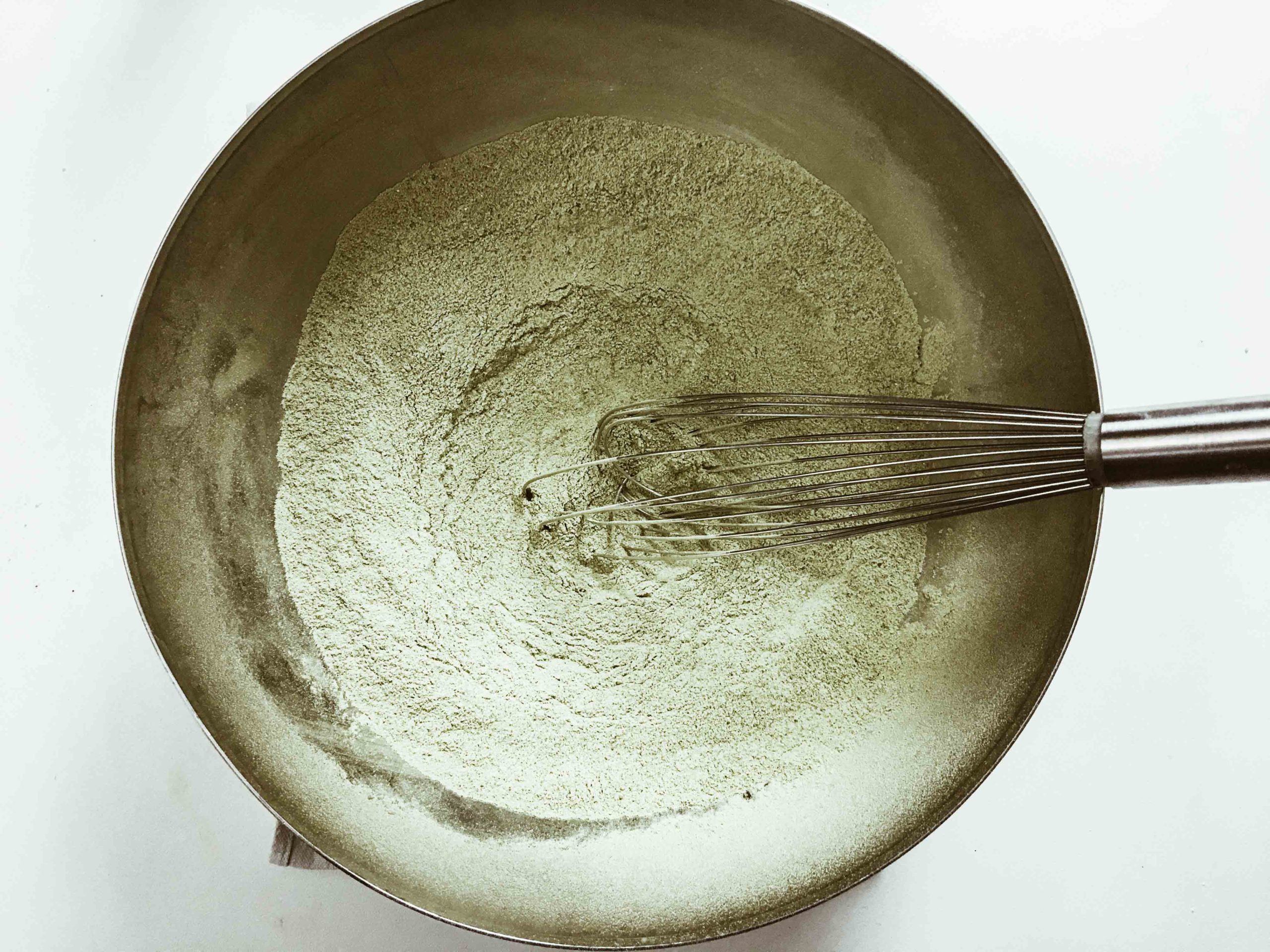
In un'altra ciotola setacciate il té verde, la farina, il lievito per dolci, sale e zucchero e con una frusta metallica a mano fate in modo che il tutto si amalgami per bene. In una ciotola a parte combinate l'acqua, l'olio e l'estratto di vaniglia. Una volta che avete tutto ben amalgamato, versate i tuorli e il composto con l'acqua e l'olio all'interno della ciotola con la farina e il té verde.
Amalgamate bene il tutto con la frusta metallica a mano fino ad ottenere un composto uniforme. Trasferite poi 1/4 degli albumi montati all'interno del vostro impasto e mescolate con una spatola per alleggerire tutto il contenuto. Gli albumi montati a neve dovrebbero essere mescolati sempre con un movimento che parte dal basso in modo che questi non perdano la montatura. Successivamente, incorporate il restante degli albumi in altre tre aggiunte.
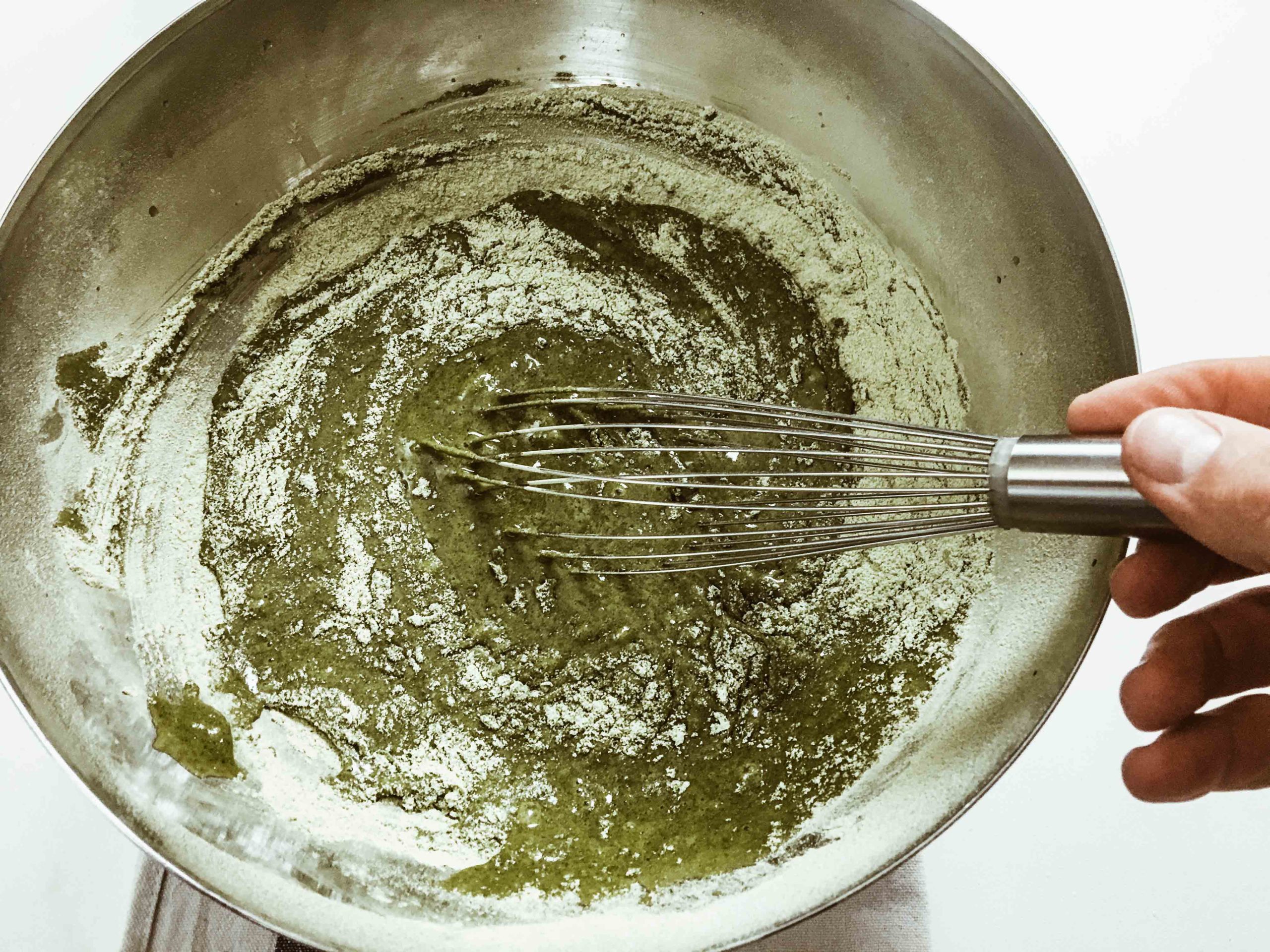
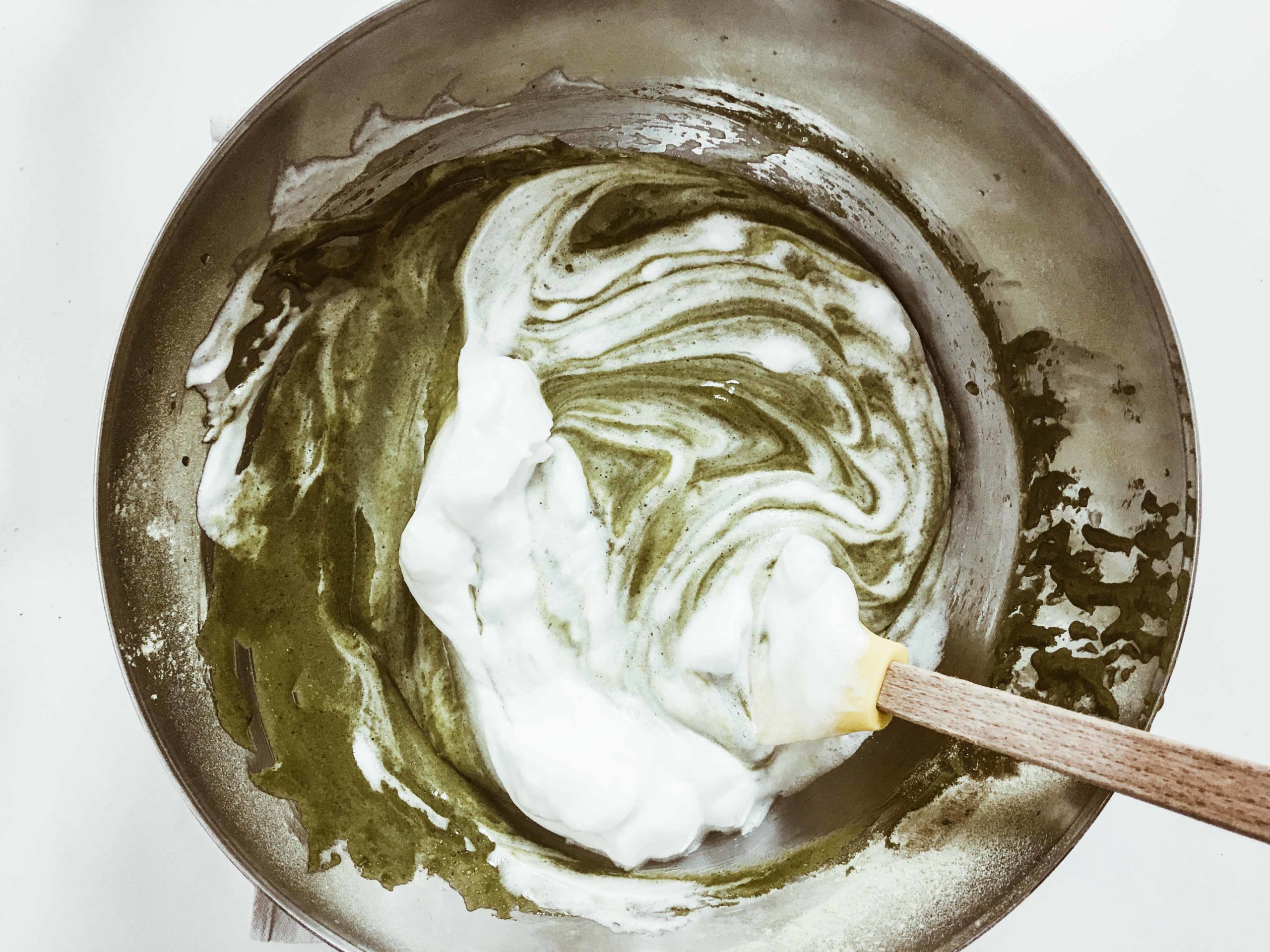

Quando avrete il composto ben amalgamato, versate l'impasto all'interno della teglia che non va nè imburrrata nè infarinata. Infilate il tutto in forno preriscaldato per circa 1 ora e 15 minuti e a cottura ultimata, estraete la teglia e rivoltatela immediatamente sotto sopra.

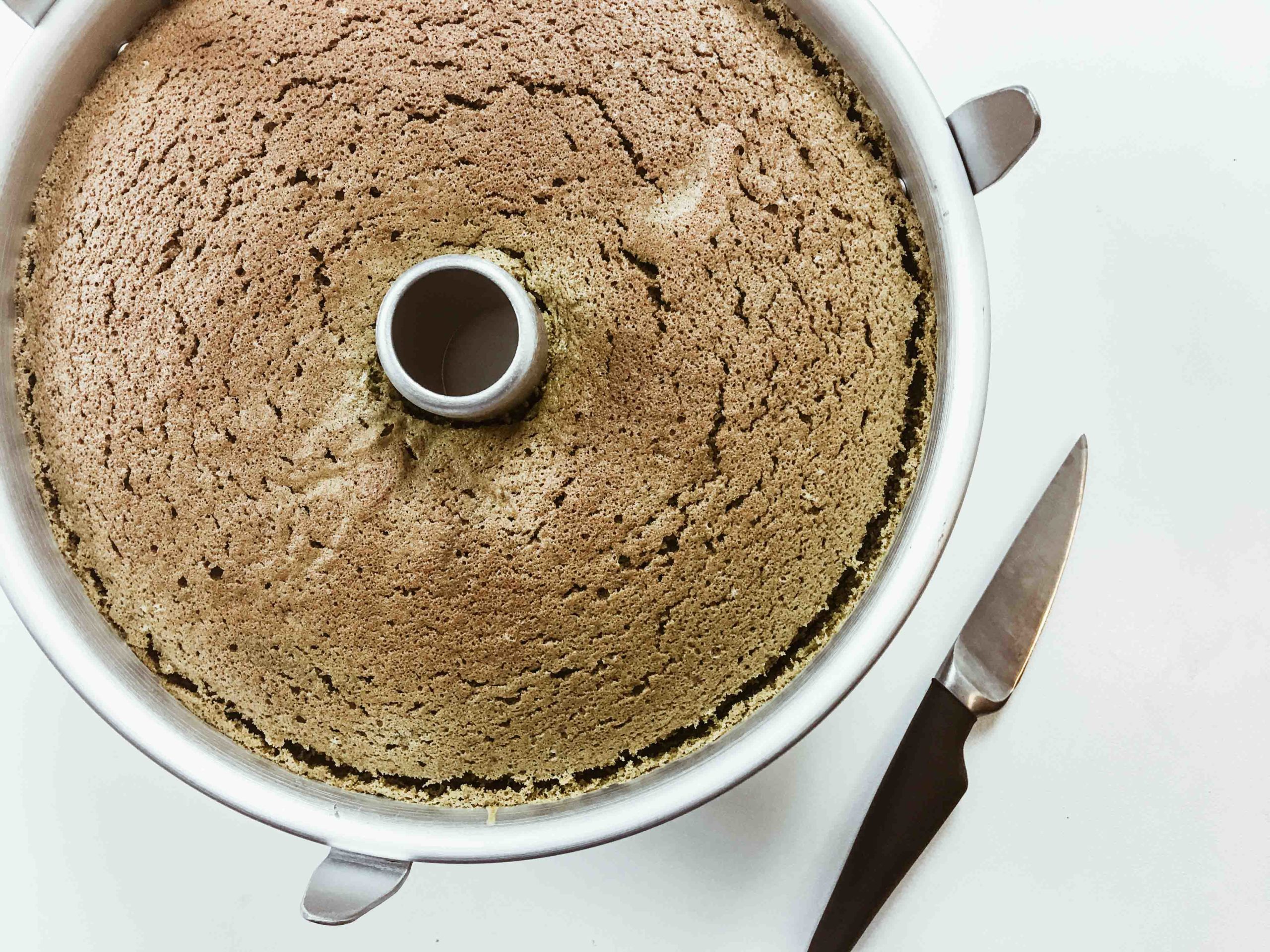

Lasciate raffreddare leggermente e poi estraete la torta dalla teglia. Una volta pronta, potrete tagliare delle fette sottili per poter decorare il vostro giardino zen.
Step 4: La passeggiata
In alcuni giardini zen, troviamo anche delle pietre piatte che ci consentono di poter attraversare il giardino lasciandolo indisturbato. Ecco come andremo a crearle noi
Mini Meringhe - Ingredienti
|
Il trucco nel preparare le meringhe sta tutto nelle uova, infatti il trucco è quello di avere uova freschissime e a temperatura ambiente. Separate quindi i tuorli dagli albumi, versando questi ultimi in un ciotola abbastanza grande. In questo caso, i tuorli non ci serviranno, ma non sprecateli e teneteli da parte, sicuramente troverete il modo di utilizzarli in cucina.
Assicuratevi che all'interno della ciotola non ci siano tracce residue di tuorli altrimenti questi non monteranno. Prendete quindi le fruste elettriche e azionatele da duna velocità media. In alternativa, potete effettuare questo processo anche all'interno di una planetaria, se a vostra disposizione. Mentre state montando le uova, versate a mano a mano lo zucchero all'interno della ciotola assieme a qualche goccia di succo di limone.
Per creare delle meringhe perfette, gli albumi dovranno essere montati a neve molto ferma e per capire se state effettuando tutto correttamente ci sono due test. Il primo è quello visivo, infatti, il composto dovrà risultare sempre lucido e spumoso. Il secondo test invece sarà possibile effettuarlo con le fruste. Infatti, staccando queste ultime dovreste notare un ciuffetto di albume con la punta. Il tutto dovrà risultare simile ad una sorta di nuvola spumosa e lucida.


Preparate una teglia con carta da forno e successivamente trasferite tutto il composto all'interno di una sac-à-poche con una bocchetta a foro rotondo. Formate dei piccoli dischi dai 2 ai 4 cm di diametro (questo dipende a seconda della grandezza del vostro giardino zen finale) ben distanziati fra loro. Successivamente infilate al teglia in forno statico preriscaldato a 75° per circa 2 ore.
Le vostre meringhe dovranno asciugarsi lentamente al forno e non appena saranno ben asciutte, estraete la teglia dal forno e lasciate raffreddare completamente prima di staccarle dalla teglia.
Step 5: Impiattamento del Giardino Zen
Ora potete dare sfogo alla fantasia e costruire il vostro giardino zen edibile secondo le vostre preferenze! Nel caso vogliate qualche idea, qui sotto trovate qualche immagine di riferimento. Se deciderete di provare a fare questa ricetta, mandateci le vostre foto nei commenti qui sotto o sulle nostre pagine social, siamo curiosi di vedere le vostre creazioni!
[ngg src="galleries" ids="3" display="basic_thumbnail" thumbnail_crop="0"]Fonti: pandispagna.net, giallozafferano.it, Pinterest, Wikipedia
Japan Italy: "Un Italiana in Giappone" la serie - Saracchan
Saracchan e la sua esperienza
scritto da: Erika
Qualche mese fa abbiamo lanciato la rubrica "Un Italiano in Giappone" dove intervistiamo i nostri connazionali nella terra del Sol Levante. In pochi riescono a realizzare il sogno di andare a vivere in Giappone e noi vogliamo condividere con voi le esperienze di chi ci è riuscito! Oggi vi presentiamo Sara, un'altra italianissima che vive e lavora in Giappone!

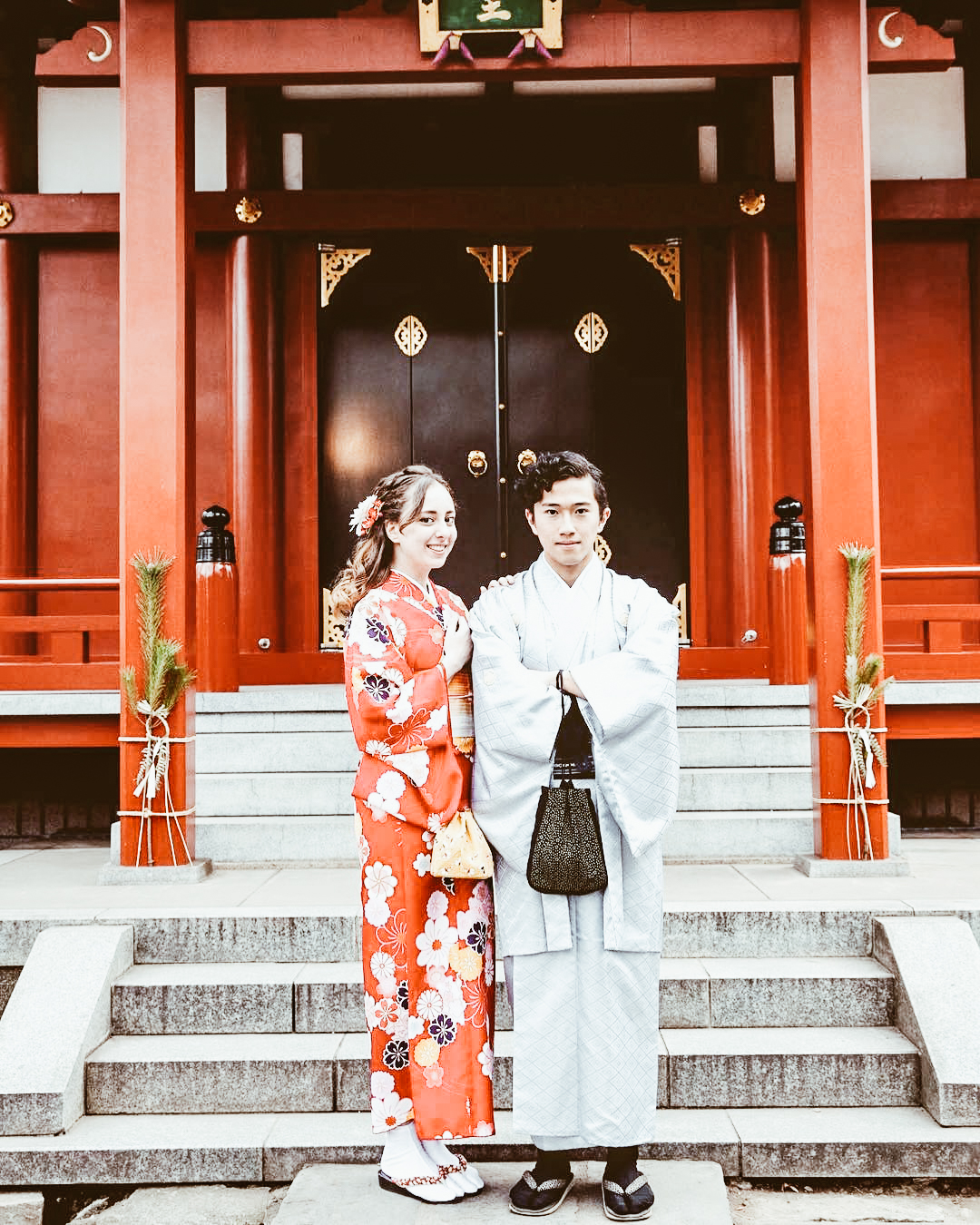
JIB: Raccontaci in breve chi sei
Saracchan: Buongiorno a tutti! Mi chiamo Sara, ho 25 anni e vengo da Milano, dove ho vissuto per la maggior parte della mia vita. Amo suonare il pianoforte, studiare il giapponese, cantare al karaoke e fare hanami, ovvero guardare i fiori di ciliegio in piena fioritura. Circa tre anni fa ho intrapreso un’avventura che mi ha completamente cambiato la vita: mi sono trasferita in Giappone, dove tutt’ora vivo, lavoro e frequento l’università.
Prima di trasferirmi nel paese del sol levante, ho aperto una pagina facebook chiamata Saracchan’s Japan, dove pubblico foto e video per gli appassionati di questa bellissima nazione. Inoltre gestisco un profilo personale su Instagram dove pubblico le mie avventure giornaliere in quel di Tokyo.
JIB: Come nasce la tua passione del Giappone?
Saracchan: La mia passione per il Giappone nasce in maniera un pò scontata, per così dire, dato che ultimamente in molti si sono avvicinati a questo Paese in questa maniera.
Forse alcuni di voi si ricorderanno che circa dieci anni fa, su MTV, andavano in onda alcuni episodi di anime, tra i quali InuYasha. Quel giorno, dopo essere tornata dal liceo, decisi di girare su canale 8 invece di guardare i soliti Simpson. Fu così che mi innamorai di questo anime particolare che raccontava, in modo pittoresco, la tradizione e la storia del Giappone. Da quel giorno in poi ho iniziato a cercare più informazioni su internet e sono stata introdotta nel mondo dei manga e degli anime, che iniziai a leggere e a guardare in modo assiduo. Tramite essi creavo un immagine del Giappone che mi faceva sognare, nondimeno per la lingua che suonava così affascinante e melodiosa. Dopo di che, passato il periodo anime e manga, mi sono avvicinata alla cultura e alle tradizioni e ho iniziato da sola a studiare la lingua.


JIB: Da quanto tempo vivi in Giappone e perchè ti sei voluta trasferire in questo paese?
Saracchan: Considerando tutte le mie esperienze in Giappone, posso dire di aver vissuto in questo meraviglioso paese per circa tre anni e mezzo. Nonostante trasferirmi sia stato un percorso difficile, posso dire orgogliosamente di aver realizzato un mio grande sogno. Da notare che con “difficile” non intendo per le questioni burocratiche, ma proprio per la decisione che mi ha portato a compiere questo enorme passo.
Infatti, dopo aver finito il liceo volevo andare assolutamente a Tokyo per poter studiare il Giapponese ma, per vari motivi, sono stata “costretta” ad iscrivermi alla facoltà di biologia di Milano. Qui non mi sentivo realizzata, non ero convinta che quella fosse la mia strada. Un giorno, per caso mi capitò di assistere a Milano alla presentazione dell’agenzia GoGoNihon, che mi ha aperto la via per il Giappone. Infatti, qualche tempo e qualche risparmio dopo, mi sono iscritta ad una scuola di lingua a Takadanobaba, Tokyo, dove ho studiato per un anno, il più bello della mia vita. Dopodichè, finito il percorso di studi, controvoglia sono tornata a Milano, e mi sono iscritta all’università di lingue straniere (con giapponese) a Bergamo. Tuttavia, ormai il mio cuore apparteneva al Giappone e così l’anno successivo mi sono iscritta alla facoltà di Business Economics in un’università a Saitama, vicino a Tokyo, dove tutt’ora studio.
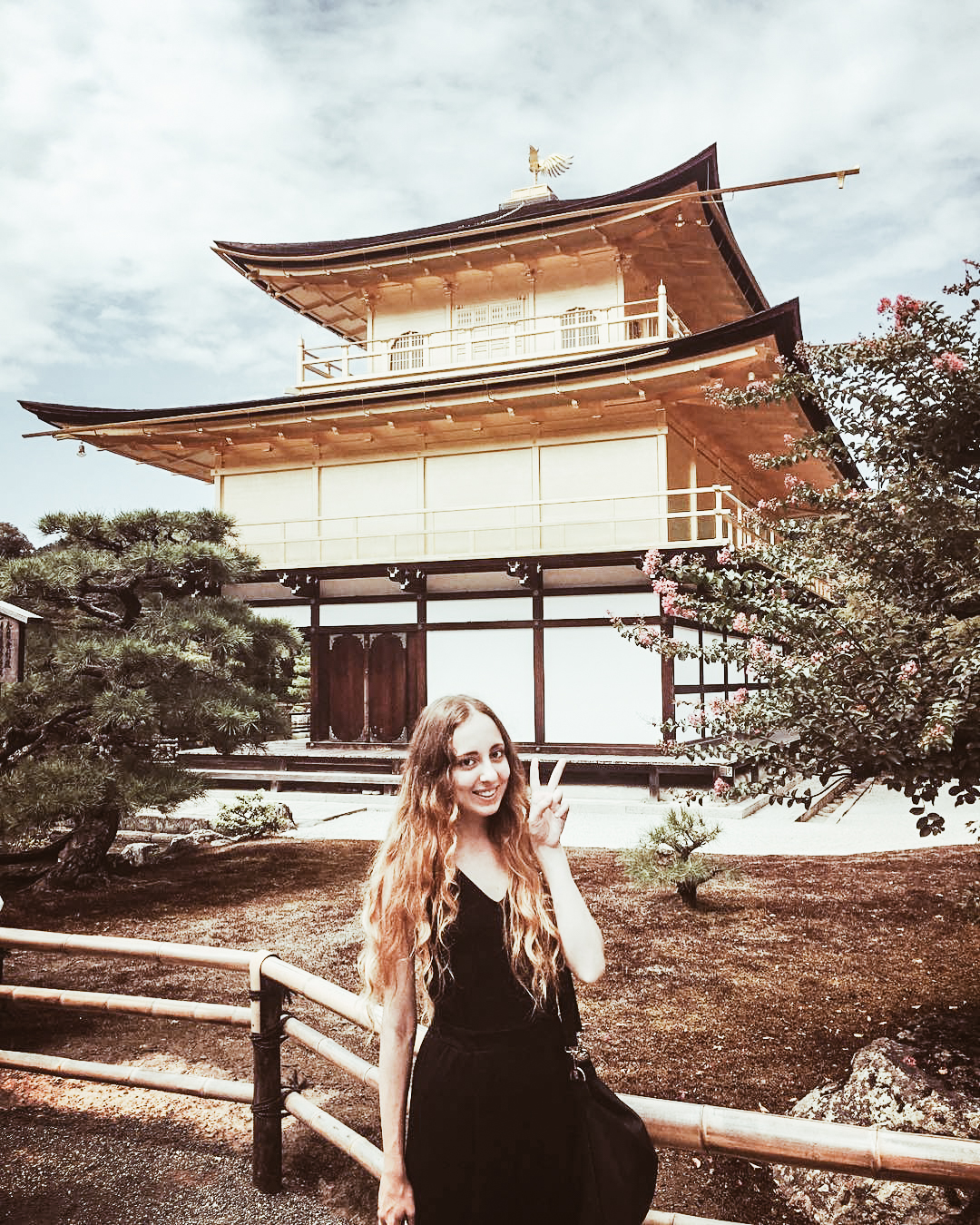

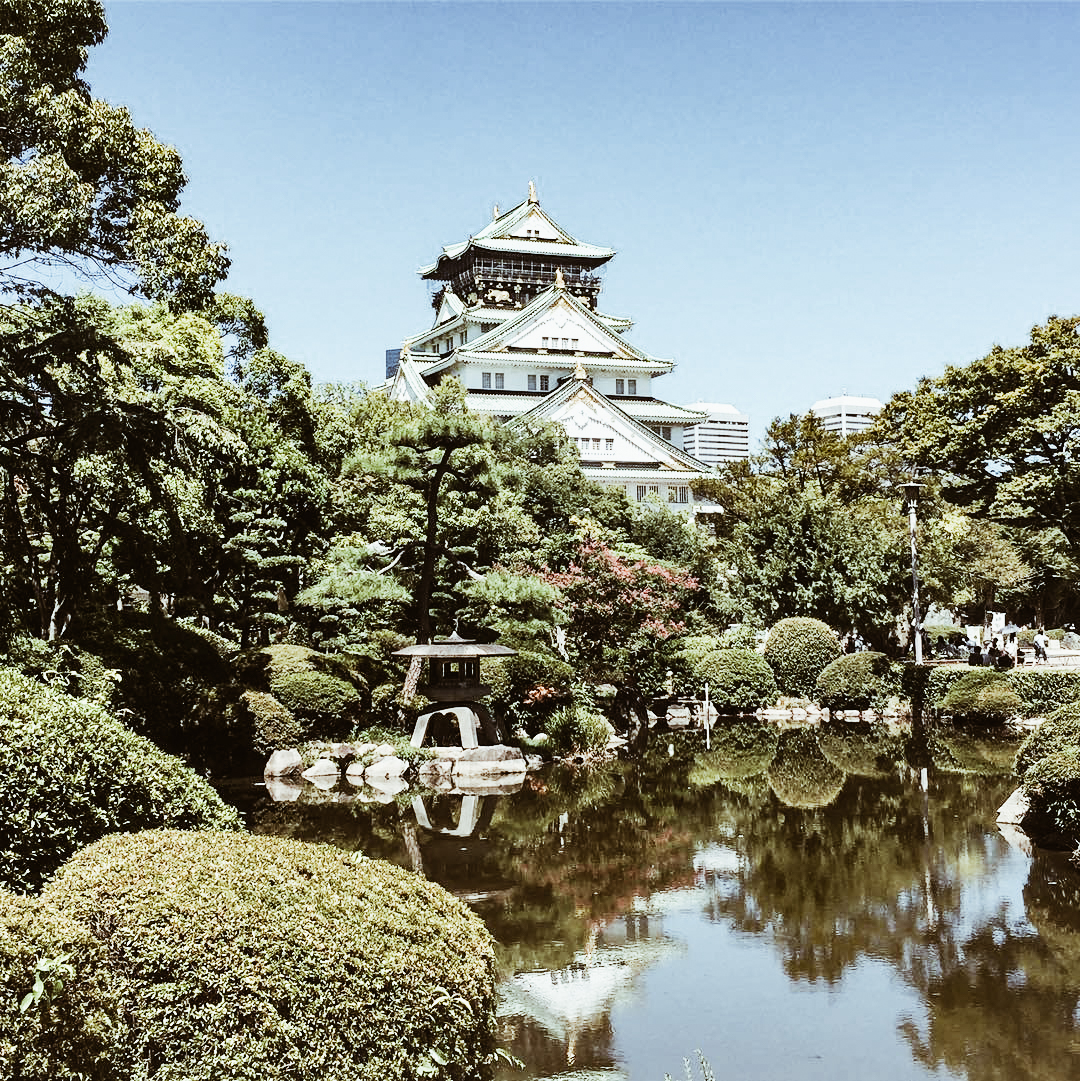
JIB: Raccontaci una delle esperienze più divertenti che ti sono capitate da quando vivi in Giappone.
Saracchan: Il Giappone mi ha offerto e tutt’ora mi offre tantissime esperienze meravigliose! Forse la prima esperienza che mi viene in mente, legata al mio anno iniziale in Giappone, è stata quando una mia cara amica giapponese mi ha invitato a passare il Capodanno nella casa dei suoi nonni in campagna, con tutta la sua famiglia. Abbiamo cucinato insieme la soba, mangiato cibo tradizionale giapponese, indossato il kimono e, allo scoccare della mezzanotte, bevuto il sake caldo davanti al falò, scambiandoci gli auguri per l’anno nuovo. E’ stata un’esperienza davvero indimenticabile!
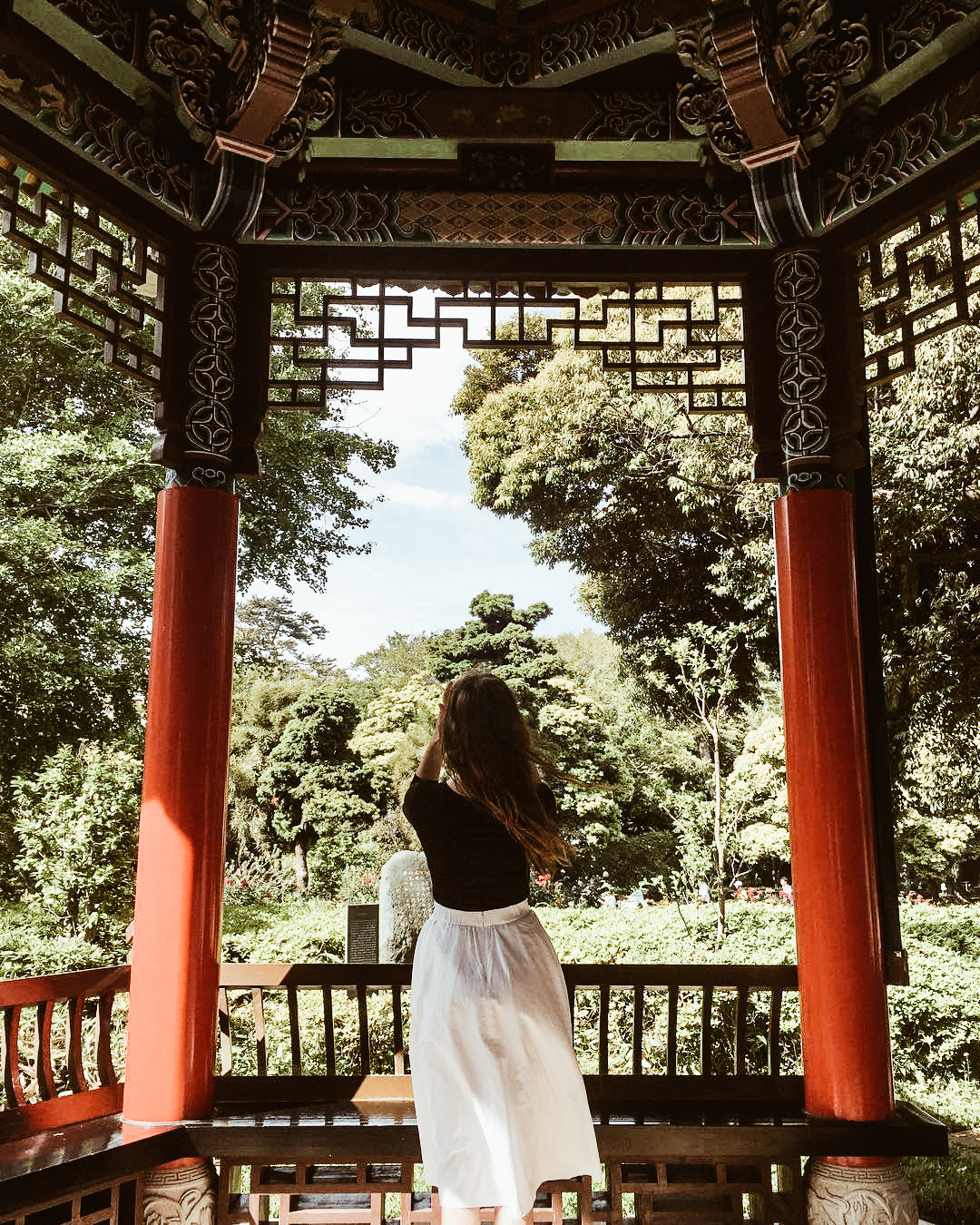
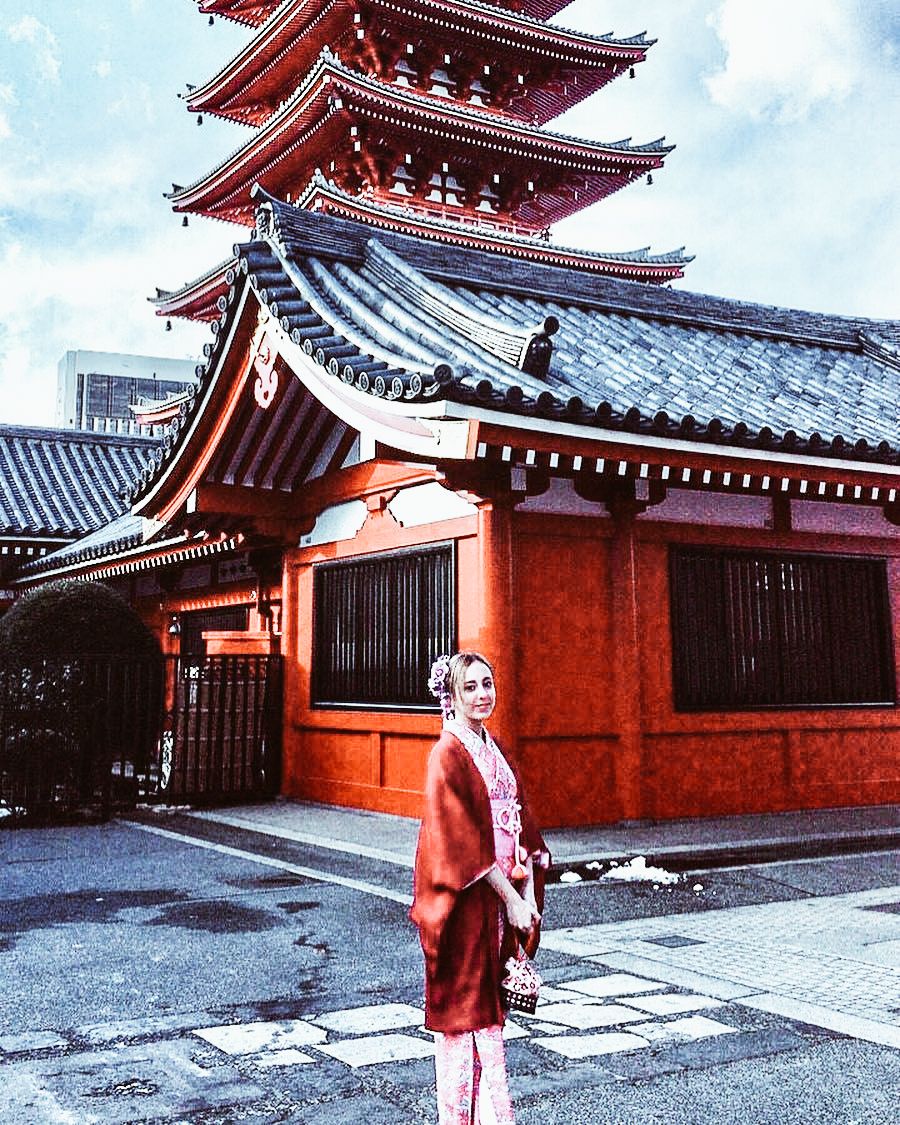
JIB: Da occidentale, quali sono le difficoltà e le differenze che hai riscontrato nei primi tempi in Giappone?
Saracchan: Sicuramente la lingua! Quando mi sono trasferita sapevo dire giusto qualche frase semplice e, non conoscendo ancora nessuno, ho dovuto fare tutto da sola, dalla spesa alle pratiche burocratiche. Per non parlare dei milioni di kanji che vedevo ogni giorno e che non avevano assolutamente senso per me. Inoltre, è stato molto difficile orientarmi con le numerose ed affollatissime linee metropolitane, ma sono tutte cose che ho affrontato con determinazione e grande curiosità.
JIB: Secondo noi, l'Italia e il Giappone hanno molto in comune, raccontaci un po' del tuo punto di vista su questo argomento.
Saracchan: Penso che il Giappone sia un paese “occidentale” in Asia, in tanti aspetti molto vicino alla nostra cultura e al nostro modo di pensare. Tuttavia, credo che sarebbe più corretto elencare le differenze fra i due paesi, dal momento che differiscono su alcune caratteristiche importanti della vita quotidiana. Pere esempio il Giappone è diverso sulla cultura del lavoro, la puntualità dei treni, la sicurezza nelle strade, il modo di vivere le relazioni e così via. La società giapponese è più incentrata sul bene comune, mentre quella italiana, a mio parere, è più individualistica.
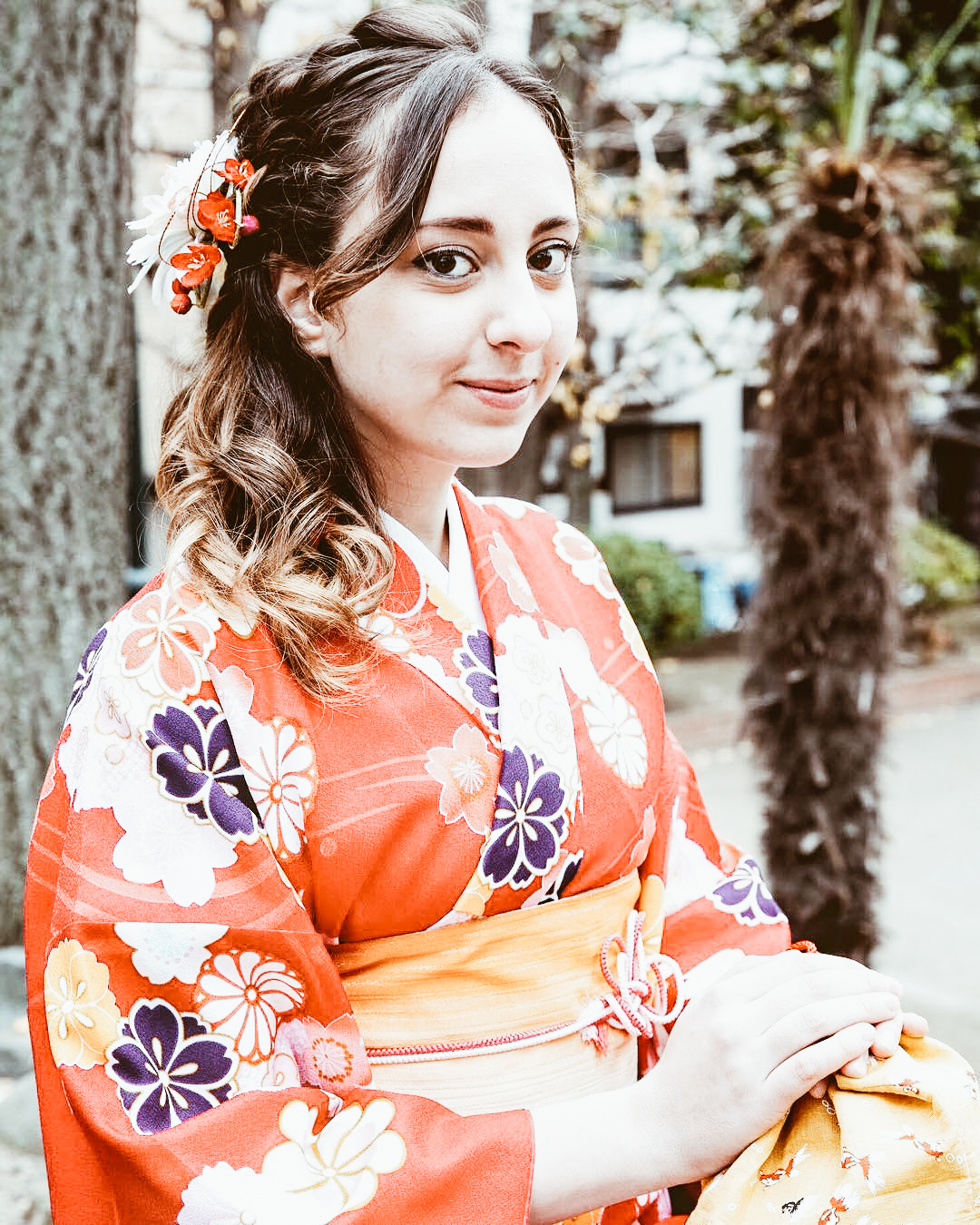
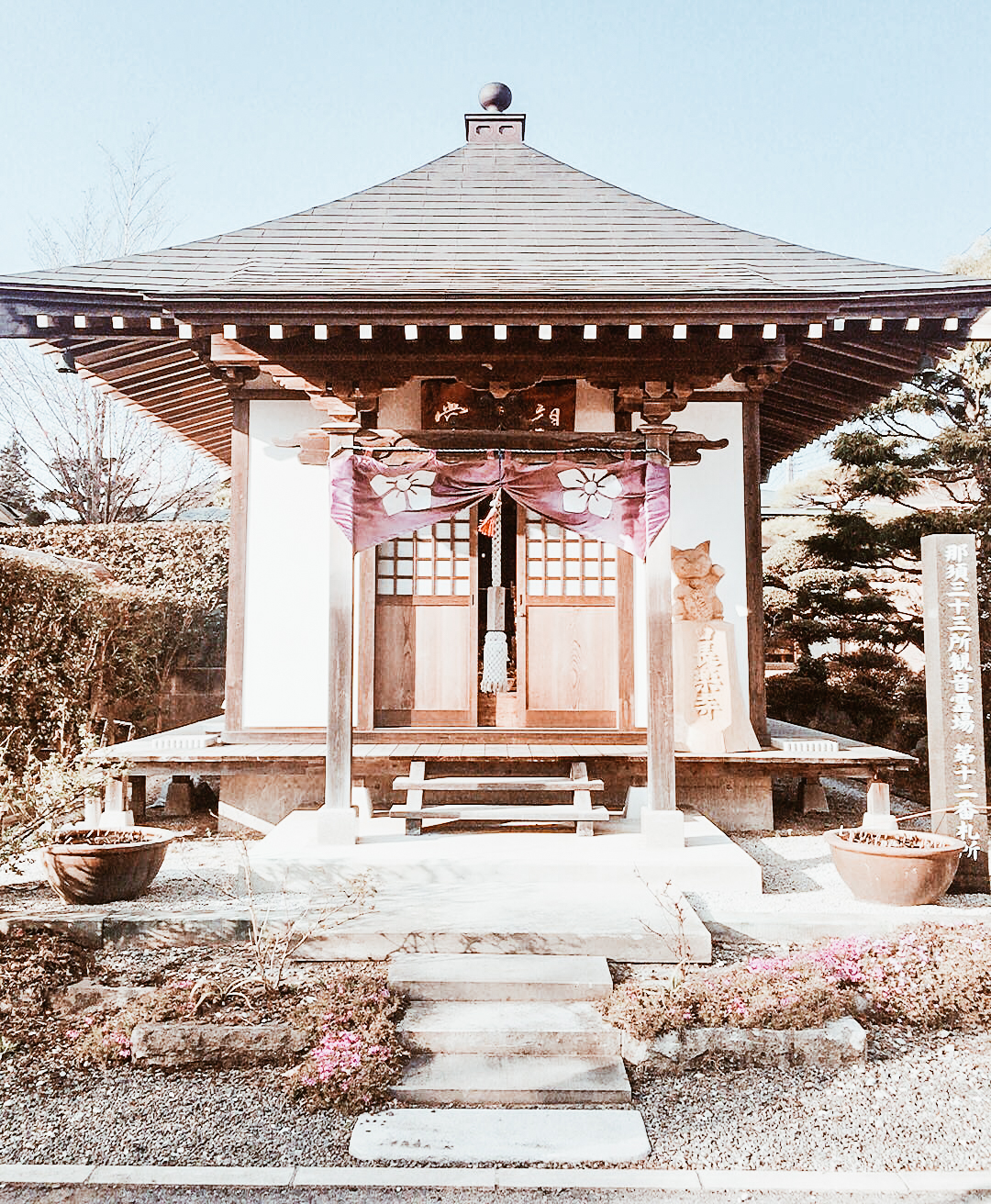
JIB: Quale città ha catturato il tuo cuore in Giappone?
Saracchan: Tokyo! E’ una città che ha tutto, non manca davvero niente. E’ modernissima, con altissimi grattacieli, ma allo stesso tempo antica, con i suoi templi nascosti sparsi per la città e le viuzze silenziose e caratteristiche che ti trasportano in un altro mondo. Ci sono moltissime attività da fare, molti posti da visitare, è immensa! Giardini spettacolari, un palazzo imperiale, karaoke, Harajuku con i suoi negozi colorati, cafe particolari ed unici nel loro genere, izakaya e molto altro ancora. Non finisce mai di stupirti e ogni giorno puoi scoprire cose nuove e incontrare persone interessanti. Inoltre, è in una posizione molto conveniente, a qualche minuto da altre caratteristiche città quali Yokohama, Enoshima e Kamakura. Direi che è perfetta per me, anche perché, contrariamente a quanto si potrebbe pensare, non è inquinata e non ci sono tante automobili.
JIB: Quale città giapponese somiglia di più all'Italia?
Saracchan: Per quanto riguarda il paesaggio urbano, direi il centro moderno di Kyoto. Lì i palazzi sono abbastanza bassi ed è molto meno caotico rispetto a Tokyo. Invece, per l’aspetto “umano”, penso che Osaka sia la città che più si avvicina all’Italia, in quanto i giapponesi che vivono lì sono più socievoli e aperti verso gli altri. Secondo me ad Osaka è più facile conoscere gente e creare nuove amicizie.
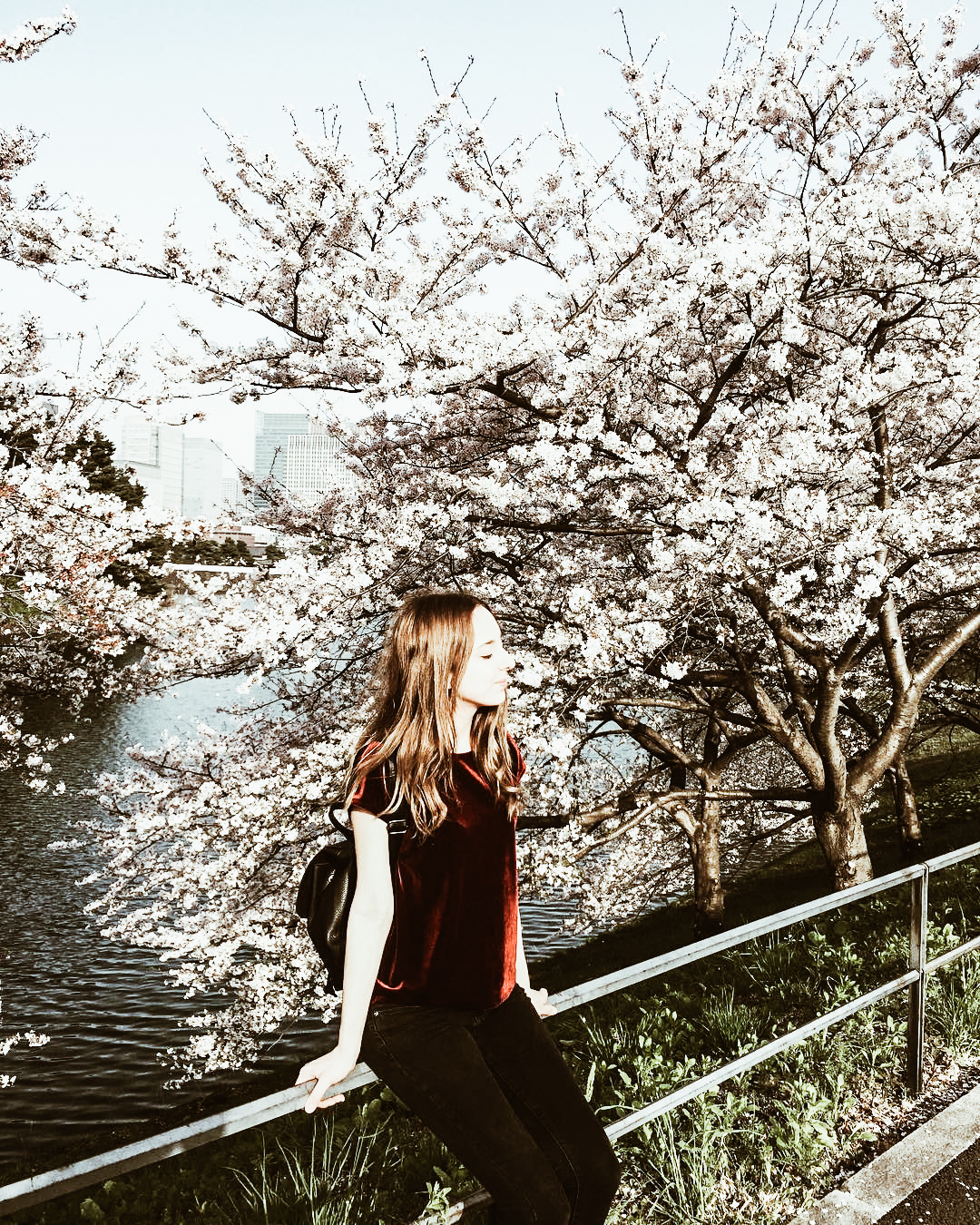


JIB: La fioritura dei ciliegi, raccontaci un po' il punto di vista di un occidentale che l'ha vissuta
Saracchan: E’ l’evento che preferisco in assoluto! Tutte le strade si colorano di rosa e si animano di visitatori che fanno centinaia di foto. Di solito, i giapponesi si radunano nei parchi con amici e familiari, stendono grandi teli blu sul prato e passano le giornate a fare pic-nic e bere sake. Inoltre, ci sono molti matsuri, ovvero festival con le bancarelle e il street food che diffondono un buonissimo profumo per tutto il parco. E’ un’esperienza unica, specialmente vedere i sakura la sera, illuminati da luci colorate che creano immagini splendide. Per chi dovesse andare a Tokyo durante questo periodo, consiglio vivamente di passare lungo il fiume Meguro e il fiume vicino al Palazzo Imperiale, zone costellate da bellissimi sakura in fiore.
JIB: Pensi ci sia un futuro per una collaborazione ancora più stretta fra le due nazioni?
Saracchan: Assolutamente sì! Ultimamente, in Italia, il Giappone e la sua cultura stanno prendendo piede e ci sono sempre più persone interessate a scoprire questo meraviglioso paese asiatico. Contemporaneamente, ci sono molti giapponesi che stanno sviluppando un grande interesse per il nostro Bel Paese. Infatti, il cibo e il vino italiano sono molto rinomati e ci sono moltissimi ristoranti specializzati nella cucina italiana. Molto spesso ci sono eventi che sponsorizzano il nostro paese e credo che in futuro ci saranno collaborazioni più strette, anche date dall’aumento di italiani che vivono in Giappone.


JIB: Ti manca mai l’Italia? Pensi di tornare qui?
Saracchan: Ogni tanto mi manca, soprattutto la mia famiglia, i miei amici e il cibo! Tutte e due le nazioni hanno molto da offrire, ognuna con i suoi pregi e difetti. Al momento non sono sicura di cosa farò dopo la laurea, se vivrò in Giappone o tornerò in Italia, ma so che mi piacerebbe avere un lavoro che mi permetta di vivere tra i due paesi, magari qualcosa legato al settore del turismo.
JIB: Lancia un saluto e un consiglio a tutti i nostri lettori a tutti i nostri lettori
Saracchan: Se siete arrivati a leggere questa domanda finale, vi ringrazio molto e spero di avervi trasmesso qualcosa o almeno di avervi dato qualche suggerimento che potrete usare in futuro. Come ultimo consiglio vi dico di non demordere e di impegnarvi al massimo per raggiungere i vostri obiettivi, che siano quelli di trasferirvi in Giappone, di studiare il giapponese o anche soltanto quello di farvi un viaggio nel paese del Sol Levante. Non sono obiettivi irraggiungibili, non serve essere ricchi, basta essere determinati e volerlo con tutto il cuore. Io, anche con l’aiuto dei miei genitori, ho lavorato sodo per poter realizzare il mio sogno e ce l’ho fatta! Potete riuscirci anche voi, non abbiate paura di osare.
Segui Sara
Instagram: @saracchan
Un hotel con i gatti? In Giappone esiste!
Il Neko Hotel apre a Osaka
scritto da: Erika | Fonte: SoraNews24
Nonostante siamo ancora tutti bloccati in casa, nessuno ci vieta di viaggiare con la mente, ecco quindi un nuovissimo hotel dove è possibile villeggiare con i gatti, il Neko Hotel ad Osaka!

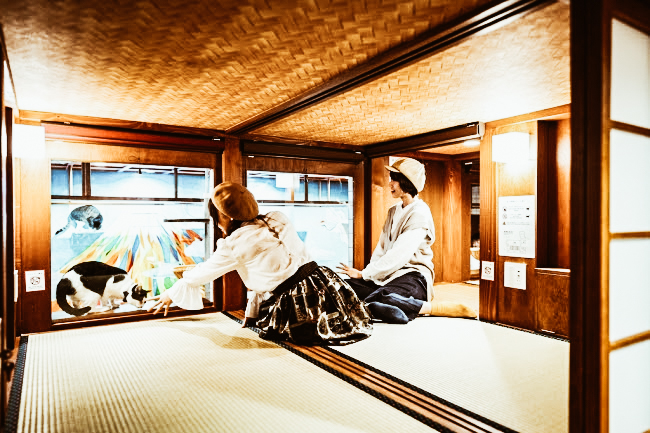

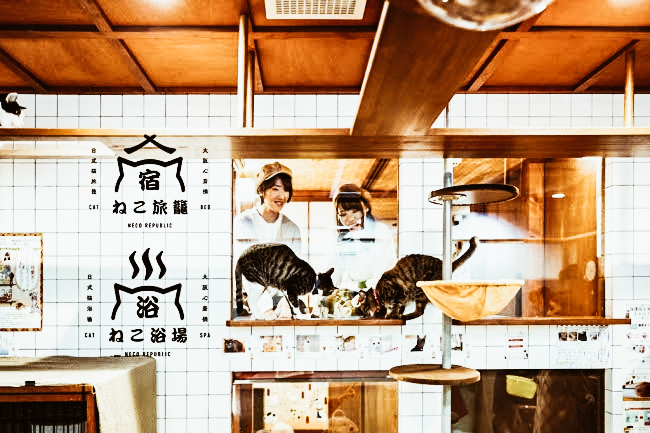
Dimenticatevi della vista mare, ora la "vista gatto" è quella che conta. Come molti di voi sapranno, in Giappone esistono i famosi capsule hotel, piccolissime stanze in posizioni ottime ma a basso prezzo. Li chiamano capsule hotel perchè sono solamente un posto dove dormire con u bagno/doccia condiviso e niente altro. Tuttavia, dallo scorso dicembre c'è un nuovissimo capsule hotel che offre una comodità extra: gatti!
Neko Yokujo & Neko Hatago, questo è il nome dello spazio che ospita un nego cafè e un neko hotel ad Osaka. Gli edifici sono divisi in due con il cat cafe da un lato e l'hotel dall'altro. I piani sono fatti in modo che l'area gioco dei gatti sia direttamente adiaccente al retro della zona notte degli ospiti. Tuttavia, invece di avere una parete solida che chiuda la visuale, il retro del compartimento notte è compota da un vetro. In questo modo, si crea una finestra che regala a tutte le persone che alloggiano in questo hotel una bellissima vista sui gatti.
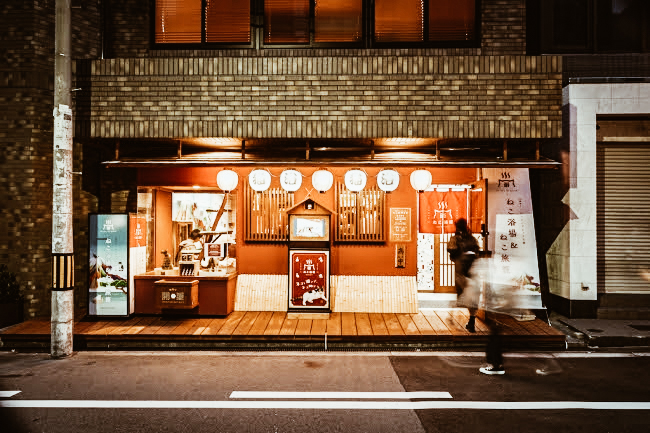



Se vi state ponendo domande per la vostra privacy, non vi preoccupate perchè ogni ospite potrà usufruire delle tende oscuranti per isolarsi se lo desidera. Inoltre, le finestre sono poste in modo che non si possa guardare nelle capsule adiacenti. In questo modo, potete tenere le tende aperte durante la notte anche dopo la chiusura del cafe per poter osservare le avventure notturne dei gatti. Inoltre, lo staff della struttura mette a disposizione anche degli appositi giocattoli controllabili via radio per poter giocare con i gatti al di là del vetro.
Ovviamente, poter osservare i gatti solamente a distanza potrebbe diventare abbastanza struggente. Per questo motivo, il neko hotel offre a tutti i propri ospiti un pacchetto che include un voucher di due ore per il cat cafe dal valore di 3000 ¥ con la possibilità di accedere al cafe anche prima e dopo l'apertura.
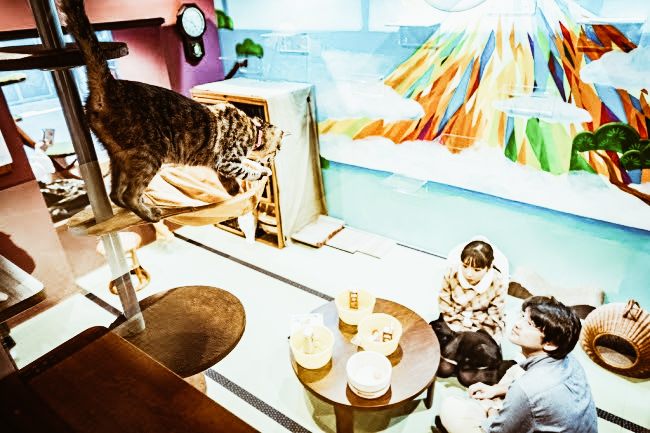
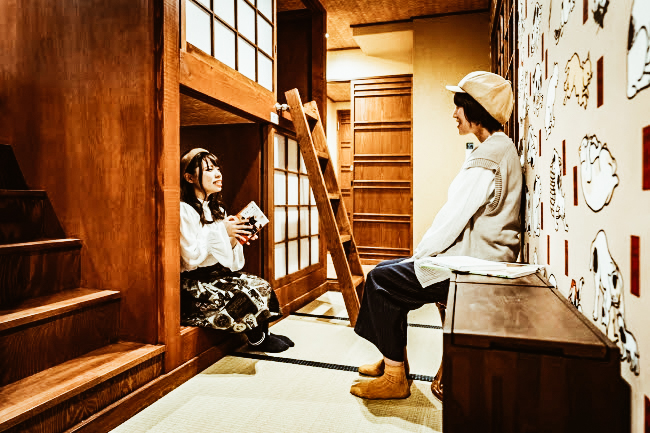
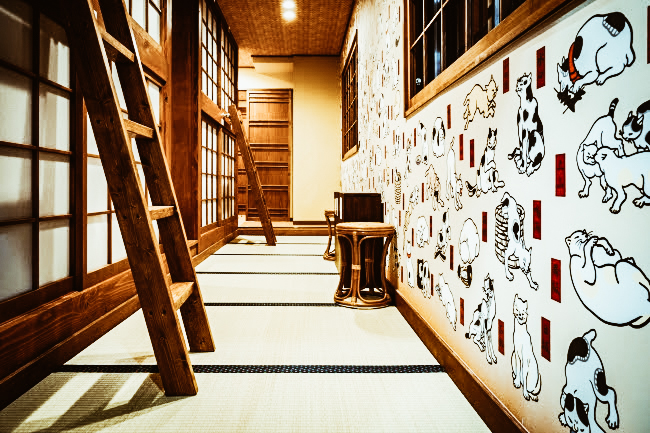

Il design del neko hotel è in tipco stile giapponese e, ovviamente, i gatti sono un tema ricorrente. Tuttavia, per tutti quelli che si innamorano facilmente di questi amici felini, potrebbe essere difficile dover dire addio dopo solo qualche notte. In questo caso, non vi preoccupate, il Neko Hatago hotel è gestito dalla società per il benessere degli animali Neco Republic. Infatti, tutti i gatti che trovate in questo hotel sono felini salvati dalla strada e sempre in cerca di una nuova casa. Sia il cafè che l'hotel incoraggiano gli ospiti a considera il soggiorno come un periodo di test per vedere se la propria personalità si adatta bene con quella di uno dei gatti, nella speranza di favorirne l'adozione.
Non la trovate una bellissima idea? Sarebbe bellissimo poterla replicare anche qui in Italia e ci piacerebbe sentire i vostri commenti a riguardo!
Informazioni
Neko Yokujo & Neko Hatago / 猫浴場&猫旅籠
Indirizzo: Osaka-shi, Chuo-ku, Shimanouchi 1-14-29
大阪市中央区島之内1丁目14
Official Website | Facebook | Instagram












